Practical Boat Owner
- Digital edition


Coming of age: the 1970s yacht designs that have stood the test of time
- Rupert Holmes
- February 14, 2020
Sailing in the 1970s was characterised by innovation, enthusiasm, mass participation and home boatbuilding. Rupert Holmes reports

The 1970s saw further rapid advances in boat design, with new boats becoming quickly outclassed. It also coincided with a new rule for rating race boats, the International Offshore Rule (IOR).
This had an enormous effect on yacht design – many cruising yachts also sported the narrow, pinched sterns of the era.
IOR severely penalised righting moment, so the bulb keels that had started to gain in popularity in the late 1960s disappeared. Instead, lightly ballasted keels , with their centre of gravity well above the mid point, became the norm.
In my view this set yacht design back by almost two decades. It also had important safety implications in terms of ultimate stability that helped contribute to the Fastnet race disaster at the end of the decade.
Nevertheless yachts became faster and were generally more robust, more reliable and more fun to sail.
For instance, the Macwester 27 of 1972 – a development of the earlier 26 – was one of the first yachts to benefit from tank testing to improve its hydrodynamic efficiency.
The result was significantly deeper bilge keels that were set at more efficient angles and a more effective rudder . This transformed speed and handling and, combined with a new interior, created a desirable yacht.
This was also the heyday of home boatbuilding .
Participation in boating continued to grow at a staggering rate, so the demand for craft far outstripped what the second-hand market could supply.
By contrast, today’s boat buyers reap the benefits of the huge number of boats that were built in the 1970s and now often change hands at very modest prices.
It’s often thought that sensible cruising yachts of this era were built exceptionally strongly.
Incidents today tend to be shared rapidly via social media, but 40 years ago it was easier to keep embarrassing events quiet.
Yet, there were numerous examples of problems, including a near new Westerly Pageant that sank on its tidal mooring in Chichester harbour when one of the keels parted company with the hull.
Similarly, all but a few Westerly GK29s , Fulmars and Konsorts had to have the reinforcement that spreads the keel loads in the bilge replaced with top-hat stringers in place of the original glass-over-plywood frames.
As with 1970s cars, the scale of some problems at this time should not be underestimated – large numbers of near-new boats had to be modified and Westerly was by no means the only manufacturer that suffered.
Fortunately for today’s buyers the appropriate repair procedures were well understood and have usually withstood the test of time well.
Designer profile: Olin Stephens America’s Cup hero and yacht designer Olin Stephens
With a career that started in the 1920s, Olin Stephens was one of the most successful and prolific designers of the 20th century.
In the early and mid-1970s he was still producing craft that excelled at every level in offshore racing and prestigious events including the Rolex Fastnet, Sydney Hobart and Whitbread Round the World races.
His designs also dominated the America’s Cup from its post-war revival in 1958 until 1980.
Stephens’ S&S 34 of 1969 had proved hugely successful, to the extent that former British Prime Minister Sir Edward Heath owned one in which he won the Sydney Hobart Race.
The design was to continue to prove successful for many years, including winning a heavy weather Round Britain and Ireland Race in the 1990s, and successfully completing several non-stop circumnavigations via the Southern Ocean. It remains a sought after and very capable classic.
This was also the era of Nautor’s early Swan designs, all of which came from the Sparkman & Stephens office until after Olin’s retirement at the age of 70. The best known by far was the Swan 65, thanks to Sayula II taking overall victory in the first Whitbread and second, third and fifth places four years later. Newer S&S designs won the next two races.
The early part of the 1970s was still an era in which successful offshore racing yachts would also make first-class cruisers and many of these boats still ply the world’s oceans.
Tomahawk 25 – 1970

The Alan Hill-designed Tomahawk 25
Marcon grew to become a huge boatbuilder in the 1970s, having been founded with the launch of the Trident 24 in 1960. Other models, including the Cutlass 27 (1967) and Sabre 27 (1968) followed, heralding a period of rapid growth that at one stage saw the company moulding some 15 designs, including the entire Rival range.
As well as laminating bare hull and deck mouldings for other boatbuilders, Marcon also supplied a large number of boats for home completion. While some of these suffered from a clearly DIY level of fit out, a few were completed to an extremely high standard that would have been unaffordable on a commercial basis.
The Tomahawk is an Alan Hill design that was offered in bilge and fin keel formats, both with a skeg hung rudder. This was a spacious design for a boat of its size in this era, both on deck and below.
The cockpit extends almost to the transom, while below decks early boats had a linear galley to port, with a dinette that converted to a double berth opposite. Later models had a more traditional arrangement with two settee berths and a small galley aft. A full-width heads compartment separates the forecabin from the saloon.
LOA: 7.70m (25ft 4in) LWL: 6.10m (20ft 0in) Beam: 2.60m (8ft 6in) Draught (fin keel): 1.40m (4ft 8in) Draught (twin keel): 0.90m (3ft 0in) Displacement: 2,300kg (5,066lb) Ballast: 1,000kg (2,200lb) Price now: £2,500-£7,000 tomahawk25.co.uk
Laser – 1970

Lasers have been hugely popular – with owners ranging from occasional club racers to Olympians
Canadian Bruce Kirby visualised an entirely new type of boat when he first sketched the Laser , a design that was reputedly created on the back of an envelope. It was conceived as a simple car-toppable boat that would be fun to sail, rewarding to race and made use of recent advances in materials.
In some senses this is the ultimate minimal boat – a slender hull with low freeboard, single sail and vestigial cockpit. A key benefit is that, unlike other dinghies of its time, the boat doesn’t need tedious bailing after a capsize. It proved an outstanding success, fleets quickly sprang up around the world and more than 215,000 have now been sold.
For best performance in the standard format the boat needs a big sailor – someone over six feet tall and weighing at least 80kg. Smaller rigs , dubbed Radial and 4.7, were therefore developed for smaller and younger sailors. This further boosted the Laser’s popularity, even though the smaller sails are underpowered relative to the hull weight.
Seven years later the Topper was born of a similar concept, but is a smaller boat of a perfect size for teenagers. It was made of almost indestructible polypropylene and at one time was the biggest injection moulding in the world.
LOA: 4.20m (13ft 9in) LWL: 3.81m (12ft 6in) Beam: 1.39m (4ft 7in) Hull weight: 59kg (130lb) Standard sail area: 7.06m2 (76ft2) Price today: £600-£4,000 laser.org
Contessa 32 – 1971

David Sadler-designed Contessa 32 is still an extremely popular and sought-after yacht
This was the second design from David Sadler to be built by Lymington boat builder Jeremy Rogers, following the long keel Contessa 26 of 1966 . At the time it represented the state of the art, with a separate skeg-hung rudder, high-aspect mainsail and large overlapping genoas.
Low freeboard and narrow beam helped keep total weight in check and contribute to ultimate stability, at the expense of the boat being wet in a seaway and reduced internal volume. The keel-stepped masthead rig is typical of early IOR inspired sail plans, with small mainsails and large overlapping genoas.
Nevertheless the hull shape is excellent for thrashing to windward in a blow and the high angle of vanishing stability – an astonishing 156° – makes for a supremely seaworthy vessel. A Contessa 32 was the smallest boat to finish the 1979 Fastnet race and examples have been sailed all over the globe.
Other designs of the same era have similar shapes, from the Nicholson 55 and Swan 65 to the 22ft Pandora and even the 19ft Squib racing keelboat that evolved into the Hunter 19 and Europa mini cruisers.
LOA: 9.75m (32ft 0in) LWL: 7.31m (24ft 0in) Beam: 3.00m (9ft 10in) Draught: 1.65m (5ft 6in) Displacement: 4,300kg (9,480lb) Ballast: 2,045kg (4,508lb) Sail area: 52.2m2 (562ft2) Price today: £14,000-£40,000 co32.org
Moody 33 – 1973

Wide-bodied Moody 33 was a big leap forward in European yacht design
This this was the first model in a range of Angus Primrose-designed yachts that marked the famous yard’s move from low-volume semi-custom boat building to becoming one of Europe’s most successful new boat sales operations.
Although the original accommodation layout was quite conventional for a centre cockpit boat of the era, it represented a giant step forward in cruising yacht design on this side of the Atlantic.
In particular the wide-beamed hull design was unusual at this time and is even not narrow by today’s standards. The later 333 models adopted a walk through to the aft cabin, albeit with limited headroom, while the 33S had an aft cockpit arrangement with a double quarter cabin.
The boat’s sailing qualities also surprised many at the time of her launch, with her then long waterline length enabling faster passage times than many ostensibly more performance oriented designs of the same length. However, a moderate draught and that wide hull limit progress in light airs and when close-hauled.
LOA: 10.06m (33ft 0in) LWL: 8.69m (28ft 5in) Beam: 3.51m (11ft 5in) Draught: 1.35m (4ft 5in) Displacement: 4,773kg (10,500lb) Ballast: 1,730kg (3,815lb) Sail area: 42.0m2 (452sq ft) Price today: £14,000-£22,000 moodyowners.org
Continues below…

Sail boat rigs: the pros and cons of each popular design
Peter Poland looks at the history of popular rig designs and how the different types affect boat performance

Boat hull design: how it impacts performance
Peter Poland explains how boat hull design has evolved over the years and how it affects boat handling and accommodation

Keel types and how they affect performance
Peter Poland looks at the history of keel design and how the different types affect performance
Jeanneau Melody – 1974

The Melody’s interior layout set the new standard
As well as new hull shapes, builders were also experimenting with new accommodation arrangements. In 1970 Jeanneau had already set new standards in interior space with the 29ft 6in Folie Douce, partly thanks to the boat’s wide beam. Six years later this was updated with an extended coachroof and renamed the Brin de Folie.
However, it was the 34ft Melody that introduced the interior layout that within 10 years would be adopted by almost every other new yacht of this size right up to the present day – the double quarter cabin.
On the Melody this is a little cramped, as the stern sections are narrower than on later designs, but this trend-setting arrangement was immediately copied and improved upon.
Early designs with a quarter cabin were often seen to be lightweight and flighty, but the Melody is a very solid sea boat.
A hefty ballast ratio and deep draught combine to make this a very capable vessel, even in heavy weather, while a powerful rig ensures good progress even in light airs. Around 600 were built.
LOA: 10.25m (33ft 7in) LWL: 8.70m (28ft 6in) Beam: 3.38m (11ft 1in) Draught: 1.90m (6ft 3in) Displacement: 6,000kg (13,228lb) Ballast: 2,900kg (6,400kg) Sail area: 55.3m2 (596ft2) Price today: £12,000-£20,000 jeanneau-owners.com
Quarter Tonners – (1967-1996)

The David Thomas Bolero design
As the decade wore on the rise of the IOR rating rule for racing yachts had an enormous effect on yacht design. The smaller Quarter Ton level rating class gave designers great opportunities to experiment, which resulted in some weird and wonderful shapes including bumps and hollows intended to exploit loopholes in the rule. This test bed also produced some important advances in yacht design.
The rule changed regularly in an attempt to keep up with designers’ creativity, so boats quickly became outclassed. As a result a thriving industry sprang up to build new designs. The class also established the reputations of a slew of designers that are still well known today, including Ron Holland, Ed Dubois , Bruce Farr and Doug Peterson.
These boats were at the forefront of innovation, which was often driven by small companies working in less than ideal conditions. It’s a long time since anything on a similar scale has existed in the UK, although there are hints of it in Poland, which has a long maritime heritage and inexpensive industrial premises.
In the early 1970s Quarter Tonners still had narrow sterns and were short waterline displacement boats, but as the decade progressed transoms broadened, opening the way to surfing, or even planing performance downwind.
Until the mid-1970s designs like Westerly’s GK24, Ron Holland’s Eygthene 24 and the David Thomas-designed Bolero (pictured) also offered tenable accommodation and were often marketed as cruiser racers. However, by the end of the decade freeboard and coachroofs had both diminished in size, with stripped out interiors having minimal volume becoming the norm. After this point high-end racing yachts and performance cruisers continued to diverge.
LOA: 7.80m (25ft 7in) LWL :6.80m (22ft 4in) Beam: 2.50m (8ft 4in) Draught: 1.40m (4ft 8in) Displacement: 1,272kg (4,170lb) Price today: £3,000-£25,000 quartertonclass.org
The Drascombe story

The enduringly popular Drascombe Lugger (Alamy stock photo)
Those who preferred more leisurely sailing in smaller boats were also well catered for. Although the Drascombe Lugger pre-dates the 1970s, this was the decade in which the popularity of the designs took off and some 4,500 from 14-22ft have now been built across more than a dozen different models.
The original 18ft Lugger, built in wood by designer John Watkinson in 1965, was an undecked open daysailer with an easily handled loose footed yawl rig.
Watkinson took his first wooden production model to the 1968 London boat show, where it proved unexpectedly popular – he took an order within half an hour of the show opening, plus a further ten before the show ended.
That led to him licensing Honnor Marine to build the boats in fibreglass . When they exhibited the first boat in 1969 sales took off.
Large families loved the big cockpit that meant children could bring their friends sailing and there was heaps of space for picnics. The outboard engine is mounted well aft to keep noise as far away from the crew as possible.
Further designs soon followed, with the 22ft Longboat unveiled in 1970. Unlike the Lugger , this was also offered with a small two-berth cabin, giving additional flexibility.
Yet the boat weighs only 480kg, so it can be towed by a relatively small car, while the simple rig with short masts makes for quick and easy launching and recovery. A clear measure of the success of the concept is the Drascombes are one of a handful of designs from their era that are still in build today.
LOA: 5.72m (18ft 9in) Beam: 1.90m (6ft 3in) Displacement: 340kg (748lb) Sail area: 12.26m2 (132ft2) Price today: £2,500-£6,500 drascombe-association.org.uk
Sigma 33 – 1979

Sigma 33 design was influenced by the IOR
This David Thomas design was conceived as a fast one-design cruiser racer. It was an instant hit with the racing community and before long the class had a 70-strong fleet competing at Cowes Week.
Much had changed in design terms since the launch of the Contessa 32 eight years earlier. The Sigma has the feel of a larger yacht – a factor that’s also reflected in the accommodation volume. Thomas stayed with a traditional layout, but greater beam and higher freeboard dramatically increases the accommodation volume.
Under water the boat is a fundamentally different shape, with a shallower canoe body and broader transom, yet proportionately less wetted surface area.
The large balanced spade rudder improves control, especially in a quartering sea, while the increased form stability and broader aft sections markedly reduce rolling when sailing downwind.
Today, the Sigma 33 is seen as a moderate design by cruisers and heavy and sluggish among the racing community.
How did it score in the seaworthiness stakes?
The Sigma 33 doesn’t benefit from the Contessa 32’s high angle of vanishing stability (AVS), but it’s still well proven. The prototype lost a coachroof window in the 1979 Fastnet race storm, when the aperture widened as the structure distorted on a big wave. Nevertheless, it became one of the smallest boats to finish the race, albeit in very experienced hands. Subsequent boats have two separate windows, with structure between them, in place of the prototype’s long single window.
Even though the Sigma 33 was not intended as an IOR design key features were still influenced by the rule and Thomas later remarked that the keel would be more effective if it was bolted on upside down!
LOA: 9.90m (32ft 9in) LWL: 8.00m (26ft 3in) Beam: 3.20m (10ft 6in) Draught: 1.70m (5ft 7in) Displacement: 4,000kg (8,820lb) Ballast: 1,680kg (3,704lb) Price today: £15,000-£26,000 sigma33.co.uk
1979 Fastnet disaster

14 August 1979. Irish Sea. A lone yachtsman aboard Camargue – eight survivors were plucked from this yacht by Royal Navy rescue helicopter (Alamy/AJAXNETPHOTO)
The decade ended with one of the biggest disasters ever to hit the boating world.
Three days into the 600-mile race winds built unexpectedly to a sustained Force 10, with some competitors recording gusts above 70 knots.
In all 24 yachts were abandoned, five of which sank, 15 competitors lost their lives, and a further six people on non-racing yachts in the area also died. That toll was the UK’s largest ever peacetime rescue mission, involving some 4,000 people.
More than a third of the fleet experienced a knock-down to 90° and a quarter beyond that, including many boats that fully inverted or pitch poled.
Part of the problem was that the IOR rule penalised righting moment and encouraged low ballast ratios.
This effectively banned low centre of gravity keels, which made knockdowns and inversions more likely. The problem was further exacerbated by the trend towards wide hulls that are more stable in the inverted position.
Since many new cruising designs of the day were based on a successful IOR hull, there’s also a raft of cruising designs that have less than ideal ultimate stability.
For cruising sailors the legacy of IOR means many thousands of affordable boats built during one of the most active ever periods of boatbuilding lack the stability they could have.
The effects of this are two-fold. In moderate conditions reduced stability means a more tender boat that needs reefing earlier and more frequently, and one that will respond to gusts in a more dramatic manner.
In extremis, if caught in severe weather lack of stability makes it easier for wave action to capsize a boat. And if it rolls to 180°, a design with a low AVS will have less chance of being righted in a timely manner.
On a positive note, the subsequent inquiry led to important improvements in lifejacket , safety harness and liferaft design.
One other important point is rarely made in this context.
The accuracy of medium term weather forecasts has been improving at a rate of around one day per decade since the late 1970s. In other words the six-day forecast now has similar accuracy to the 48-hour forecast in 1979.
Yachting World
- Digital Edition

The Yachting World hall of fame: 50 yachts that changed the way we sail
- Helen Fretter
- May 13, 2020
We asked historians, round the world race winners and legendary sailors to name the yachts that changed the sport for good. In no particular order, these are the 50 yachts that shifted how we sail...
Built: 1977 Design: Bill Lee
Weight saving is the holy grail of yacht design today, but it wasn’t until the late ’70s that the first Ultra Light Displacement designs, or ULDBs, were launched.
Among them was Bill Lee’s 67ft Merlin, at 12.5 tonnes and just 12ft wide. Merlin smashed the 1977 Transpac course record, setting a time which stood for 20 years.
Officials, concerned that ULDBs were not robust enough for ocean racing, changed the Transpac rule in an attempt to limit it to slower IOR designs.
Merlin was heavily modified, but still managed to win the ‘Barn Door’ trophy for the fastest crossing twice more. The record was finally broken by the sled Pyewacket , also designed by Lee, two decades on.

12. Monitor
Built: 1955 Design: Gordon Baker
Legendary offshore sailor Loick Peyron nominates this futuristic design from the ’50s: “I think Gordon Baker’s Monitor is the one, which in the 1950s did a lot for the present and future of sailing.”
The 26ft Monitor is quite unlike anything else, made of glued mahogany with hollow, stainless steel hydrofoils which look more like windmill vanes than yacht foils – unsurprisingly, as that is what Baker Manufacturing had previously focused on. The early hydrofoiling yacht was reported to have a top speed of around 30 knots, using battened cotton sails.
13. Infiniti 46
Built: 2015 Design: Hugh Welbourn/Gordon Kay
The DSS-enabled Infiniti 46 is the first yacht to be designed around the twin retractable foil system (rather than have them retrofitted) to increase lift, reducing drag and heeling angle.
Since 2016 she’s been campaigned hard, winning class in the Middle Sea Race and RORC Transatlantic Race.
14. Vestas Sail Rocket II
Built: 2011 Design: Malcolm Barnsley
For two decades speed sailing was dominated by the race to top the 50-knot barrier. Yellow Pages Endeavour got to 46.52 knots over 500m in 1993, then ten years later windsurfers and kitesurfers upped the ante, finally pushing over 50 knots in 2008.
Macquarie Innovation became the first sailing vessel to nudge over 50 knots in 2009. Then in 2014 Paul Larsen on Vestas SailRocket II knocked all previous attempts out of the park with an incredible 65.45 knots in Namibia. Nobody has even got remotely close since.
15. Maltese Falcon
Built: 2006 Design: Dykstra/Perini Navi
At the time the most grandiose yacht ever to be built, the 289ft Maltese Falcon was a technical triumph. Her three-masted ‘Dynarig’ system was created by Perini Navi at the behest of technology investor Tom Perkins , and is a modern day development of a 1960s concept created by Wilhelm Prølss.
Her gold and granite styling is not to everyone’s tastes, but the 2,400sq m sail area saw Maltese Falcon sail across the Atlantic in ten days. The systems proved so successful she was spotted sailing off her mooring in some venues – quite a feat for a 1,200-tonne vessel .
16. Speedboat
Built: 2008 Design: Juan Kouyoumdjian
Launched as Speedboat in 2008, this 100-footer was initially designed with the express intention of setting records, specifically the transatlantic record. Following on from Juan K’s successful Volvo 70 designs, she was exceptionally wide at the transom with a deep canting keel and water ballast, but record successes were few and far between.
Re-optimised for IRC as Rambler 100 she had some race victories before losing her keel and capsizing in the 2011 Rolex Fastnet Race , with five crew swept away from the boat.

All were rescued safely, but the incident intensified the focus on reliability in canting keel designs.
When owner George David commissioned the replacement Rambler 88 , his new yacht includes fibreoptic patches on the keel fin and load sensors on the pin, with data continuously fed to the navigation station
17. Pen Duick IV
Built: 1968 Design: André Allègre
“Built by Eric Tabarly, this was the first large ocean-racing multihull, which led the trend towards large multihulls in ocean races,” Robin Knox-Johnston nominates Pen Duick IV.
“For example, it encouraged us to ask Rod Macalpine Downie to design the 70-foot catamaran British Oxygen in 1973.”
Pen Duick IV took victory in the 1972 OSTAR with Alain Colas, who went on to sail her solo around the world – the first solo multihull circumnavigation.
18. Class 40
Built: 2005 Design: Various
The Class 40s have provided a first step into ocean racing for many skippers. Less than a year after the class was formed, 25 lined up for the 2006 Route du Rhum .
Pro navigator Campbell Field explains: “ It would be easy to nominate ‘Swiss Army knife’ foilers, or the super high tech IMOCAs. However, the Class 40s are complete in many ways. Affordable, bulletproof, ultra high performance, safe, and sexy [they can be sailed] one, two or four-up. They are simple, dynamic, rewarding, and guaranteed to thrill.
“A shortfall is their inshore capabilities, however what other class of yacht brings accessibility to top level ocean racing to a broad audience? They outstrip the performance of many much larger yachts offshore .”

Photo: Jacques Vapillon
19. Pierre 1er
Built: 1989 Design: Van Peteghem & Lauriot Prévost
Beautiful and radical, the golden Pierre 1er was the first ORMA 60 and won the 1990 Route du Rhum with Florence Arthaud.
Vincent Lauriot Prévost recalls: “I think in ocean racing the first big change was to fly the hull with a trimaran as if with a catamaran.” Pierre 1er was swiftly followed by Primagaz , the first big tri to sail on one float.

20. America
Built: 1851 Design: James Rich Steers & George Steers
The yacht which famously won around the Isle of Wight one August day some 169 years ago, America was also radical. Marc van Peteghem comments: “The schooner America brought something new. She was the first really wide beamed racing yacht to win against really narrow boats. It was a first really big step.”
- 1. Introduction
How the Most Popular Sailboat Ever Was Invented
The Sunfish taught millions of Americans to seize the breeze
Kate Wheeling
:focal(1241x827:1242x828)/https://tf-cmsv2-smithsonianmag-media.s3.amazonaws.com/filer_public/49/07/4907326a-a85c-4721-86a1-c951e3faa780/julaug2023_g26_prologue.jpg)
It's the platonic ideal of the sailboat, unmistakable in lakes and coastal waters across the country, with its colorful, equilateral triangle sail pulled taut in the summer breeze. It’s also the most popular sailboat ever made, with more than half a million built since the first launch in 1952.
The design of the Sunfish came from Cortlandt Heyniger and Alex Bryan, friends whose company, Alcort, was building a rescue paddleboard for the Red Cross. On a whim, Bryan added a simple sail to the wooden board to create a basic but elegant sailboat. As legend holds, his wife, Aileen Bryan—née Shields, a sailing scion and racing champion—tried sailing the craft and wanted a little more room to maneuver, as she was then pregnant. So Alcort’s first employee, Carl Meinert, designed a cockpit for the Sunfish, drawing the first mock-up in dust on the floor of Alcort’s woodshop in Waterbury, Connecticut. The first Sunfish was built in the early 1950s.
The first models were wood and measured just under 14 feet long. They sold for less than $200—roughly $2,200 in today’s dollars—and could be launched right from the beach without a dock, making the Sunfish an accessible and affordable fixture at vacation houses across the United States.
The Sunfish also opened up the world of sailboat racing to those who could not afford yachts and club memberships: 1963 saw the first North American championship for Sunfish racers, and the first Sunfish World Championship was held in the U.S. Virgin Islands in 1970. The boat’s simplicity meant winning was truly a testament to one’s skills; as one Sunfish dealer told the New York Times in 1970, “Racing one puts a lot on the man.” Or woman, adds Lee Parks, a two-time winner of the women’s North American national championship: “Unlike some other classes, the Sunfish class is male and female. It’s multigenerational. Anybody can sail them.” In 1977, Fortune magazine named the boat one of America’s 25 best-designed products. The Sunfish designers were inducted into the Sailing Hall of Fame in 2021.
Sunfish enthusiasts, whether casual sailors or serious racers, are known for their sportsmanship. According to Parks, “Every event you go to is like a family reunion.”

40 Best Sailboats
- By Cruising World Editors
- Updated: April 18, 2019
Sailors are certainly passionate about their boats, and if you doubt that bold statement, try posting an article dubbed “ 40 Best Sailboats ” and see what happens.
Barely had the list gone live, when one reader responded, “Where do I begin? So many glaring omissions!” Like scores of others, he listed a number of sailboats and brands that we were too stupid to think of, but unlike some, he did sign off on a somewhat upbeat note: “If it weren’t for the presence of the Bermuda 40 in Cruising World’s list, I wouldn’t even have bothered to vote.”
By vote, he means that he, like hundreds of other readers, took the time to click through to an accompanying page where we asked you to help us reshuffle our alphabetical listing of noteworthy production sailboats so that we could rank them instead by popularity. So we ask you to keep in mind that this list of the best sailboats was created by our readers.
The quest to building this list all began with such a simple question, one that’s probably been posed at one time or another in any bar where sailors meet to raise a glass or two: If you had to pick, what’re the best sailboats ever built?
In no time, a dozen or more from a variety of sailboat manufacturers were on the table and the debate was on. And so, having fun with it, we decided to put the same question to a handful of CW ‘s friends: writers and sailors and designers and builders whose opinions we value. Their favorites poured in and soon an inkling of a list began to take shape. To corral things a bit and avoid going all the way back to Joshua Slocum and his venerable Spray —Hell, to Noah and his infamous Ark —we decided to focus our concentration on production monohull sailboats, which literally opened up the sport to anyone who wanted to get out on the water. And since CW is on the verge or turning 40, we decided that would be a nice round number at which to draw the line and usher in our coming ruby anniversary.
If you enjoy scrolling through this list, which includes all types of sailboats, then perhaps you would also be interested in browsing our list of the Best Cruising Sailboats . Check it out and, of course, feel free to add your favorite boat, too. Here at Cruising World , we like nothing better than talking about boats, and it turns out, so do you.
40. Moore 24
39. pearson vanguard, 38. dufour arpege 30, 37. alerion express 28, 36. mason 43/44, 35. jeanneau sun odyssey 43ds, 34. nor’sea 27, 33. freedom 40, 32. beneteau sense 50, 31. nonsuch 30, 30. swan 44, 29. c&c landfall 38, 28. gulfstar 50, 27. sabre 36, 26. pearson triton, 25. islander 36, 24. gozzard 36, 23. bristol 40, 22. tartan 34, 21. morgan out island 41, 20. hylas 49, 19. contessa 26, 18. whitby 42, 17. columbia 50, 16. morris 36, 15. hunter 356, 13. beneteau 423, 12. westsail 32, 10. alberg 30, 9. island packet 38, 8. passport 40, 7. tayana 37, 6. peterson 44, 5. pacific seacraft 37, 4. hallberg-rassy 42, 3. catalina 30, 2. hinckley bermuda 40, 1. valiant 40.
- More: monohull , Sailboats
- More Sailboats
A Gem in New England
Thinking of a shift to power, tradewinds debuts 59-foot twe6 smart electric yacht, sailboat preview: dufour 44, good bread for good health, center of effort, the halfway point: sailing to bermuda.
- Digital Edition
- Customer Service
- Privacy Policy
- Email Newsletters
- Cruising World
- Sailing World
- Salt Water Sportsman
- Sport Fishing
- Wakeboarding
The 70s saw huge advances in boating technology and craftsmanship, leading to some of the most iconic models ever made. From sleek powerboats to stylish sailboats, it seemed there was something for everyone who wanted to find freedom on the open seas.
Power boats.
- Boat Manufactures Of The 70s
In the 1970s, boat manufacturers were hard at work creating vessels that would take people away from their day-to-day lives and set them free. The sound of a vessel cutting through water was like a siren song for those seeking adventure and relaxation. Freedom seekers everywhere found solace in these boats, which served as an escape from reality and welcomed passengers to explore beyond what they knew.
The 70s saw huge advances in boating technology and craftsmanship, leading to some of the most iconic models ever made. From sleek powerboats to stylish sailboats, it seemed there was something for everyone who wanted to find freedom on the open seas. Companies such as Chris Craft and Bayliner designed boats with innovation in mind, making sure customers had access to features that allowed them to enjoy their time out on the water even more.
Boat manufacturers of the 70s pushed boundaries when it came to design, performance, and comfort, providing experiences that will never be forgotten by those lucky enough to have sailed or motored across the waters during this era. In this article, we'll look at how far we've come since then and why these decades are still revered today.
Fiberglass Boats
Fiberglass boats have been the go-to choice for water lovers since the 1970s. They are lightweight and durable, making them ideal for recreational activities of all kinds. Fiberglass boat manufacturers in this decade produced an array of vessels, from small fishing boats to luxury yachts.
The process of building a fiberglass boat requires specialized knowledge and attention to detail. Boat builders use molds and custom designs to create unique shapes and sizes that meet their customers' needs. Repairing these vessels can be just as challenging; it takes time, patience, and expertise to repair any damage that may occur over time.
Fortunately, there are plenty of resources available today to help with both fiberglass boat building and repair - whether you're constructing your own vessel or need assistance maintaining one you already own. You don't have to let any technical challenges stand in the way of getting out on the water! With the right guidance, anyone can become an expert fiberglass boat builder or repair specialist.
Wooden Boats
Wooden boats are timeless classics that evoke a sense of nostalgia for many people. They can be seen gliding across the lake or bobbing in the harbor, providing an escape from everyday life to their owners. Since the 1970s, wooden boat building has been both an art and a craft; with careful attention to detail, these vessels become works of beauty ready to set sail on any adventure.
The process of constructing a wooden boat requires skill and precision. The right materials must be chosen according to the type of vessel being built, followed by precise measurements during construction and assembly. Once complete, it's time for finishing touches like varnishing - which helps protect against weathering while adding shine and color to the boat’s exterior.
When properly cared for, wooden boats can last several generations, making them a great investment in family memories and quality time spent together on the water. With patience and dedication, anyone can learn how to build and maintain one of these beautiful vessels – ensuring countless days out at sea for years to come!
Sailboats are a popular choice for many water enthusiasts, offering an exhilarating ride and plenty of adventure. Whether it’s leisurely sailing or competitive racing, there is something special about the freedom felt when out on the open waters aboard one of these vessels. But before setting sail, you'll need to make sure your boat has all the right parts – from masts and sails to rigging and rudders - as well as being familiar with basic sailboat handling.
To get started in sailboat racing, you'll also want to upgrade your vessel's equipment accordingly. This can include items such as lighter-weight sails that help reduce drag during races, along with adjustable mast steps, which allow the sailor to adjust the angle of their sails depending on the wind conditions. You may even consider adding additional features like spinnakers or gennakers if you plan on taking part in long-distance races.
No matter what type of sailing experience you're looking for, proper preparation is key to achieving success. Sailors must learn how to safely operate their boats while understanding important rules and regulations; they should also become knowledgeable about sailboat rigging and maintenance so that any necessary repairs can be done quickly and efficiently. With this knowledge under your belt, nothing will stop you from making waves!
The next section focuses on fishing boats...
Fishing Boats
Fishing boats are the perfect vessels for those seeking a peaceful journey out onto the open waters. Whether you're an amateur or an experienced angler, there's something special about being able to cast your line and explore new fishing grounds. But before heading out, it’s important to understand what type of vessel will best suit your needs, as well as select all the necessary accessories that go along with it.
When shopping for a fishing boat, consider different factors such as size, hull design, power source, features, and more. Fishermen should also assess their own expertise level when selecting a model; for instance, beginners may want to opt for something easier, like an inflatable kayak, whereas experienced fishermen can take advantage of larger options with additional features. Additionally, make sure to purchase essential items such as life jackets and navigation equipment in order to stay safe while on the water.
No matter which type of fishing boat is chosen, proper maintenance and care are extremely important to ensure its longevity and performance over time. This includes cleaning the deck after each use, so dirt does not accumulate; checking fluid levels such as fuel and oil regularly; inspecting joints and fasteners often; performing general repairs when needed; and storing the vessel properly during off-season months. With these steps taken into account, one can embark upon any voyage knowing they have done everything possible to prepare themselves for success!
Motor Boats
Motor boats are the perfect vessels for those seeking a thrilling experience on the open waters. From speedboats to yachts, motorboat manufacturers offer a variety of models that can suit any budget and lifestyle. When selecting one, it’s important to consider factors such as size, power source, engine type, cost, and more. Depending on how often you plan on using your boat will also determine which version is right for you.
The most common types of motors used in today’s recreational vessels include outboard engines, stern drives, jet drive systems, and electric propulsion units. Outboards are usually the least expensive option but provide less torque than other varieties; however, they typically require less maintenance due to their simple design. Stern drives or “inboards” have become increasingly popular over the years because of their superior performance capabilities and higher top speeds. Jet drives are ideal for shallow water applications or areas with heavy vegetation where propellers may become easily damaged, whereas electric propulsion offers silent operation without unnecessary noise pollution—making them perfect for lakefront properties!
When shopping around for motorboats, prices vary greatly depending on features and brand name recognition; however, there are many affordable options available when searching online dealerships or classified ads. It's important to inspect each vessel thoroughly before making a purchase; this includes checking fluid levels such as oil and fuel, along with inspecting all wiring connections and hoses. In addition, asking the dealer questions about warranty information, safety equipment provided onboard, and general maintenance advice can help make sure your investment lasts long into the future!
Pontoon boats are a popular choice for those looking to cruise the waters in leisure and style. Not only do they provide ample seating, but their unique construction allows them to comfortably traverse shallow water bodies such as lakes or rivers. Pontoon boats come in many different sizes and materials, from inflatable models that can be easily transported by car to larger aluminum versions with powerful outboard motors—the design possibilities truly are endless!
When selecting a pontoon boat, it’s important to consider factors such as available space onboard, storage capacity, safety features, and propulsion type. Many pontoons come equipped with accessories like built-in coolers, rod holders, and even live wells which all contribute towards making each trip an enjoyable experience. Additionally, most manufacturers also offer comfort packages which include things like padded seats, sunshades, and other amenities designed specifically for relaxing on the open ocean.
In addition to these convenience items, there are plenty of customization options available when it comes to designing your own pontoon boat. From color schemes to flooring material choices—everything is customizable based on your desired budget and needs. Whether you're looking for a weekend getaway vessel or something more substantial for extended trips away from shore— pontoon boats can provide just about everything needed for optimal enjoyment on the open seas!
With its spacious deck area and low draft profile combined with its overall affordability—it’s no wonder why so many people choose pontoons as their preferred vessels year after year. Moving forward from here, we'll take a closer look at jet boats--powerful engines capable of tackling any aquatic adventure one could imagine!
Building on the excitement of pontoons, jet boats is an even more thrilling way to take on any aquatic adventure. Manufactured with powerful engines and agile maneuverability, these vessels have been around since the mid-1970s when various companies began producing them for recreational use. Jetboats offer a unique experience due to their shallow draft profile that allows for quick acceleration in tight areas—perfect for those looking to explore narrow coves or rivers inaccessible by large craft.
When it comes to manufacturing quality jet boats, few can compete with the attention to detail and performance found in models from the 1970s era. From aluminum hulls designed specifically for river running and whitewater rafting to fiberglass options ideal for fishing trips, there's something available no matter what your needs may be.
Here’s a list of some of the most popular manufacturers during this period:
1) Glastron – One of the earliest producers of personal watercraft vehicles (PWC), they were well known back then as being reliable yet lightweight enough to be easily towed behind a vehicle.
2) Tracker Marine Group - Started out producing riveted aluminum boats which quickly grew into one of today's leading boat brands, offering everything from party barges and bass boats all the way up to luxury cruisers.
3) Four Winns – They released several high-performance ski/speed boats throughout the ’70s, which remain popular among enthusiasts still today!
4) Sea Ray Boats – Often seen gracing marinas across America, Sea Rays provide sleek styling combined with top-notch performance regardless if you’re touring lakeside towns or heading offshore in search of fish.
The combination of engineering innovation and craftsmanship put forth by each manufacturer has enabled jet boat owners everywhere to enjoy fast speed runs across open waters while also having access to luxurious amenities such as sun pads and wet bars not found on other types of crafts—making them perfect for extended getaways with friends or family alike. With so many choices out there, anyone searching for an adrenaline rush is sure to find just what they're looking for when purchasing a jet boat manufactured during the 1970s! Ready now to explore catamarans? Let's go!
Catamarans have been around for centuries, but it wasn’t until recently that they started gaining popularity among sailors. In fact, catamaran sales in the U.S. alone are estimated to reach an astounding $1 billion by 2022! This is likely due to their unique design, which allows them to traverse through shallower waters while also providing stability and comfort during voyages—offering a sense of freedom not found on other types of boats.
The modern-day catamaran has come a long way since its initial conception; current models often feature two hulls connected with a strong yet lightweight frame designed specifically for sailing efficiently, even when faced with choppy or windy conditions. Plus, there are several different versions available depending on your needs, such as sport fishing boats, luxury yachts, and day cruisers, just to name a few.
If you're looking for something more adventurous, though, consider investing in one equipped with all the necessities like radar systems, GPS navigation devices, and marine radios—allowing you to explore far beyond what traditional sailboats could ever take you. No matter how you choose to use yours, one thing's for sure: Catamarans offer unparalleled levels of performance and convenience, making them perfect for those seeking out true independence at sea! Let's now look into the world of yachts.
Yachts are the epitome of luxury when it comes to boats. Long, sleek, and beautiful—these vessels offer a way to explore far-off destinations in style. Whether you’re looking for an adventure on the open seas or just want to relax while sailing with friends and family, yachts have become increasingly popular amongst those seeking out a truly unique experience.
Many yacht manufacturers specialize in creating high-end models that come equipped with all the luxuries one could desire, like state-of-the-art navigation systems, spacious cabins, and even hot tubs! However, these usually carry hefty price tags, so be sure to do your research before investing in one of these luxurious vessels.
Of course, if you're more interested in simply enjoying the freedom of sailing, then there are still plenty of options available that don't require such large investments; smaller sailboats can provide similar experiences without breaking the bank. All you need is some decent weather and knowledge about how to safely operate them—and suddenly, you'll be able to travel anywhere your heart desires! From peaceful harbors to remote islands filled with hidden wonders, nothing beats taking off on a yacht and seeing where each voyage will take you.
So whether it's for leisurely day sails or longer voyages across distant lands, owning a yacht provides endless possibilities for exploring new horizons—allowing us to fulfill our innermost desires for true freedom at sea. Let's now look into another type of boat: inflatables.
Inflatables
Inflatables, with their light and airy nature, offer a unique way to explore the waters—allowing one to flit around like a bright butterfly. From lazy river rides to daring feats of adventure, these vessels provide an unparalleled level of freedom that can't help but put a smile on your face! Whether you're looking for something simple or require more sophisticated features, inflatables are sure to fit any need and budget:
1) Inflatable canoes – These boats come in all shapes and sizes, so it's easy to find one that fits whatever needs you to have. They also offer plenty of storage space for taking supplies along on longer voyages. Best of all, they’re incredibly lightweight, which makes them ideal for solo trips or those who don’t have too many people onboard.
2) Inflatable kayaks – Perfect for exploring shallow areas where traditional kayaks can't go, these vessels are extremely versatile when it comes to maneuvering through tight spaces. Plus, since they're usually made from durable materials such as PVC or rubber, they'll last through even the toughest conditions without fail!
3) Inflatable rafts – If you want some serious fun out on the water, then look no further than an inflatable raft! These vessels are perfect for larger groups and feature built-in seating, so everyone has enough room while paddling around. There are also plenty of options available if you want additional accessories, such as oars or motors, making them great choices for fishing trips or other leisurely activities.
No matter what type of vessel you choose—inflatables allow us to revel in the beauty of nature while giving us the opportunity to venture off into unknown territories with ease. For those seeking out true liberation at sea, there’s simply no better option available than these amazing floating contraptions! Now let's take a look at some popular brands offering quality inflatable models...
Popular Brands
When it comes to inflatable boats, there are a few renowned manufacturers that stand out from the rest. From luxurious yachts to sturdy fishing vessels, these brands have something for everyone!
Let's take a look at some of the top names in the industry:
Grady-White – A leader in performance and reliability since 1959, Grady-White has been producing quality inflatables since they first hit the market. Whether you’re looking for an all-out adventure or just want to relax on the water, their line of vessels is sure to please even the most discerning customer. Their attention to detail ensures each product will handle any situation with ease—making them perfect choices for those who push their boats hard!
Bayliner – Known as “The World’s Number One Boat Brand”, Bayliner offers unbeatable value when it comes to inflatables. With models ranging from small dinghies to large houseboats—there’s truly something for everyone here! Plus, with excellent warranties and customer service options available, you can be assured your vessel will stay afloat no matter where your travels may lead you.
Sea Ray – Since its founding in 1959, Sea Ray has become one of the premier boat builders worldwide. Offering both rigid and inflatable models—you're sure to find something that fits your style perfectly here! Quality construction means every feature is built with precision, while cutting-edge technology provides enhanced safety features such as self-bailing hulls and reinforced transoms. It's easy to see why this brand continues to be so popular amongst enthusiasts everywhere!
No matter what kind of boating experience you seek—it pays off big time when you choose a reputable manufacturer like the three listed above. Durability and affordability make investing in an inflatable well worth it, allowing anyone to explore our beautiful waters without breaking the bank. As we move forward into uncharted seas, let's shift focus toward another type of vessel known for its speed and maneuverability: performance boats...
Performance Boats
Performance boats are the ultimate expression of freedom on the water. Whether you’re out for a leisurely cruise or want to race against other vessels, these marvels of engineering can get you there in style and speed! Let's take a look at some of the top manufacturers:
1. Cigarette Racing – Founded in 1969, this iconic brand has been producing high-performance racing boats that have won more races around the world than any other manufacturer. With sleek designs and ultra-powerful engines—Cigarette is sure to please even the most discerning boater looking for that extra edge on the open sea.
2. Fountain Powerboats – Boasting over 50 years of experience building performance vessels, it’s no wonder why they remain one of the leading brands within their field. Their luxurious models come with all the bells and whistles, from state-of-the-art navigation systems to custom interiors tailored specifically to each customer's needs. Plus, when backed by their unbeatable warranties, it’s easy to see why so many people love them!
3. Donzi Marine – Taking luxury to another level since 1964, Donzi offers an unparalleled selection of stylish performance craft designed to turn heads wherever they go! With powerful engines capable of reaching speeds up to 80 knots (92 mph), these beauties effortlessly zip through waves like never before while providing modern conveniences such as satellite radio and climate control throughout their cabins. No matter where your journey takes you—Donzi will always provide a memorable ride!
When shopping for performance boats, be sure to keep these three manufacturers in mind for superior results every time! From classic looks combined with cutting-edge technology—these companies know how to satisfy customers' need for speed without sacrificing comfort or reliability along the way. What comes next? Innovative designs made possible by modern materials and manufacturing processes…
Innovative Designs
Innovative designs in boat construction have revolutionized the way we enjoy time on the water. With advances in technology and engineering, today’s vessels are more robust than ever before! From sleek fiberglass hulls to lightweight materials that make for faster speeds—the possibilities seem endless when it comes to crafting your ideal craft. In truth, modern watercraft engineering has pushed boundaries further than anyone could have imagined just a few decades ago.
Thanks to these innovative developments, boaters can now take advantage of some truly spectacular features and amenities while out at sea. Whether you prefer open-air seating or opt to stay cozy and comfortable inside with air conditioning, there's something available for all types of tastes. On top of this, advanced navigation systems offer precise positioning data so you can get where you need to go without worry or hassle. Truly remarkable!
These days, performance boats are as much about luxury and convenience as they are about speed and power. And with such incredible advancements being made every year, one thing is certain: no matter what type of vessel you're looking for—there's sure to be an option perfect for your needs! What better way to explore the waves than from behind the wheel of a state-of-the-art masterpiece? Let's move on to how best to maintain them...
Boat Maintenance
Boat maintenance is key for any boater looking to get the most out of their vessel. No matter how luxurious or advanced a boat may be, it will require regular upkeep in order to remain functional and safe. A few simple steps can go a long way toward ensuring your boat remains reliable and seaworthy into the future.
Inspections are essential when it comes to boat repairs and maintenance. Checking regularly for signs of wear and tear on hoses, propellers, and other crucial parts plays an important role in keeping your craft running smoothly. Additionally, inspecting fuel systems helps detect potential issues before they become costly problems down the line.
Finally, proper cleaning and waxing techniques help protect against water damage while also preserving the look and feel of your vessel's exterior. With a little bit of care here and there, you'll be able to enjoy time on the waves worry-free! On top of this, with enhanced safety measures now commonplace—you can rest assured that you're making smart decisions every time you set sail. So let’s turn our attention to cost considerations next…
Cost Of Boats
The cost of a boat is no small consideration. From purchasing to maintenance, boats can be expensive investments that require careful budgeting and planning. But if you’re willing to do your research, there are plenty of ways to keep costs low while still getting the most out of your vessel.
When it comes to boat pricing, looking at used models or refurbished vessels may offer more bang for your buck than shelling out big money for something brand new. Additionally, certain features like fuel efficiency or size could influence which model will best suit both your needs and wallet—so don't forget to factor in those details when making your decision.
Finally, understanding what kind of expenses come with owning a boat is also key for staying on top of costs. Maintenance supplies, dock fees, insurance premiums, and other miscellaneous items all add up over time—but being aware of them ahead of time makes keeping tabs on expenditures easier in the long run. With this knowledge at hand, you'll be able to make informed decisions about how much you want (and can) spend on boating activities!
Owning a boat can be a rewarding experience, both physically and emotionally. With the right maintenance and safety measures, you can enjoy many years of fun out on the water. The 70s saw some groundbreaking developments in the world of boating, with several manufacturers making waves with their innovative designs and reliable products. From classic speedboats to luxurious yachts, there was something for everyone during this time period - no matter your budget or preferences. By taking the time to research your options carefully, you’ll be sure to find a vessel that fits all your needs perfectly.
The 1970s were an exciting era for recreational boaters as advancements in technology allowed manufacturers to push boundaries and create vessels that could handle rougher conditions than ever before. In addition to improved performance and capabilities, these boats also provided users with more comfort and convenience features than had been available until then. And while owning a boat requires dedication and hard work, it is often worth it when you consider how much joy they can bring into our lives - from days spent fishing with friends to unforgettable family vacations away from home.
In conclusion, choosing the right boat manufacturer for your needs is essential if you want to get the most out of your purchase. Fortunately, those who lived through the 70s know just how wide a variety of amazing boats was created during that time period - so make sure to take advantage of the wealth of knowledge they have acquired over the years! Whether it's cruising around the lakeside or exploring distant islands, finding the perfect boat will provide countless hours of enjoyment while creating lasting memories along the way.

About The Author
Mike Tarantino , Owner/Author
Mike is an avid boater who loves all types of boating, from fishing to cruising. He's been boating for over 20 years, and it's his favorite pastime. He started out in small boats, and now owns a large motor cruiser. Mike loves the challenge of navigating rivers and lakes, and he's always excited to explore new places. When he's not on the water, Mike enjoys tinkering with his boat, and he's always looking for new and interesting ways to improve it. He's an experienced sailor, and he enjoys sharing his knowledge and enthusiasm with others.
FAQs: Boat Manufactures Of The 70s
What type of maintenance is required to keep a boat in good condition.
Maintaining a boat is an important part of owning one and something that should not be overlooked. Boat upkeep requires regular servicing and repair to keep the vessel in good condition and ensure its safety on the water. From checking the fuel system to cleaning out engine compartments, there are many steps involved in proper boat maintenance.
For starters, preventive maintenance can help extend the life of your boat’s components while also helping you avoid costly repairs down the road. Regularly inspecting hoses, wiring systems, and other parts for any signs of wear or damage can go a long way toward avoiding major issues with your vessel later. Additionally, changing out fluids such as oil regularly will ensure that all its engines are running smoothly and efficiently.
Finally, it's important to remember that when taking care of your boat, you're not just protecting its functionality - you're also protecting yourself! With proper maintenance practices in place, owners can rest assured their time spent on the open sea is safe and enjoyable. Without these vital tasks being performed regularly, boats may become unsafe or suffer from mechanical issues, which could make them dangerous to operate. So don't forget: when it comes to keeping your vessel in tip-top shape - preventative maintenance really is key!
What Are The Benefits Of Owning A Boat?
Owning a boat is the ultimate expression of freedom and independence. It's an experience that can only be described as magical. From majestic sunrises to breathtaking sunsets, gliding on open water allows you to feel at one with nature like no other activity. The boating lifestyle offers so many benefits that it's hard to even count them all!
For starters, when you own a boat, you gain access to some truly incredible marine leisure activities such as fishing, swimming, diving, sailing, and much more. Whether you're cruising around your favorite lake or exploring the nearby coastline, taking in stunning views while soaking up the sunshine - owning a boat gives you endless opportunities for adventure and exploration.
Living life on board also brings its own unique set of rewards, from spending time with friends and family to simply enjoying some peace and tranquility away from the hustle and bustle of everyday life. Additionally, being out on the open sea helps connect us to our natural environment whilst encouraging us to appreciate our surroundings in a way we never could ashore. Boat ownership provides something special that cannot be achieved any other way – total relaxation combined with limitless possibilities for fun-filled days spent outdoors!
What Are The Most Common Types Of Boat For Recreational Use?
Finding the right boat for recreational use can be an intimidating process. Whether you’re looking to fish, sail, or just cruise with friends and family, there are a variety of recreational boats available on the market today. Knowing which type of boat is best suited for your boating activities will ensure that you have many enjoyable years out on the water.
Let's take a look at some of the most popular types of boats used for recreation. Fishing boats feature specialized accessories such as fishing rod holders, live wells, and trolling motors designed specifically to help anglers catch their next big catch. Sailboats offer an opportunity to explore distant waters while harnessing the wind power needed to propel them forward. For those who want luxury and comfort during their time spent on the lake or ocean, pontoon boats are great options thanks to their spacious deck area, plush seating areas, and other amenities typically found onboard larger vessels.
No matter what type of boat you choose for your recreational needs, it’s important to do thorough research before making your purchase decision. From understanding, hull sizes and design features that fit certain activities to evaluating the engine size and horsepower necessary for long-term performance - identifying all these factors ahead of time will put you in good stead when it comes time to hit the open water!
How Do I Choose The Right Size Boat For My Needs?
When it comes to boating, one of the most important decisions is selecting the right size boat for your needs. Whether you’re a beginner or an experienced sailor, choosing the wrong size vessel can have serious consequences out on open water. So how do we go about finding the perfect fit?
It’s easy to rush into buying any old boat without doing thorough research beforehand. I get it; there’s something so exhilarating and free about being on board a new craft that makes us want to take off as soon as possible! But if you want to make sure your experience with boating is safe and enjoyable, here are three key things to keep in mind when considering boat size:
- Understand what type of activities you plan on doing with your boat – will this be used for fishing, cruising, or racing? Each activity requires different-sized vessels with varying features.
- Consider where you will typically use your boat - coastal vs inland waters require boats of different sizes due to navigational restrictions and conditions.
- Think about who will use the boat - smaller boats may not offer enough seating capacity for groups or families.
Finding the right size boat isn't always easy, but taking these factors into account can help ensure that you select a craft that meets your specific boating needs. You should also speak with an expert at a local marina or consult online reviews from customers who purchased similar boats before making a final decision. The goal is to find a balance between safety, comfort, and convenience while creating memories that last forever!
What Safety Measures Should I Take When Operating A Boat?
When operating a boat, safety should always be your top priority. Boating safety is essential for anyone venturing out on the water, and there are several key things to keep in mind during boat operations. Water safety can help ensure that everyone has an enjoyable experience while boating.
To get started with boating safely, here are three important steps:
- Take a boating education class or refresher course, so you know how to handle emergency situations.
- Always wear a life jacket when on board – even experienced swimmers can find themselves in trouble if they’re not wearing one!
- Make sure to check the weather conditions before departing and plan accordingly; this includes bringing enough food and water for unexpected delays or changes in the route.
It's also important to have a checklist of items aboard at all times, such as flares, radios, fire extinguishers, spare fuel tanks, oars, and paddles in case of mechanical failure or other emergencies that may arise while out on the water. It's always best to err on the side of caution when it comes to being prepared while operating a boat - it could end up saving lives!
Safety measures aside, taking time away from shore offers an opportunity for freedom like no other – reconnecting with nature, family, and friends without any external distractions makes it hard to beat. There's nothing quite like casting off into open waters with some good company and letting go of worries for a while! So don't forget about the importance of safe boating practices but enjoy your time afloat too!
Other Article
Power boats articles.
- What Is A Boat Engine Compartment Alarm?
- Overview Of The Caravelle 232 Interceptor Power Boat
- Improve Your Power Boating Experience: Tips And Tricks
- Power Boats: Everything You Need To Know To Get Started
- 2007 Sea Ray 230 Select Sports Boat
- Silverton Marine 33 Sport Coupe
- Do's And Dont's When Hiring A Charter Boat Company
- Top 10 Must Have Boat Accessories
- Discover The Magic Of Sailing Today
- How To Find The Perfect Sailboat For Your Needs
- The Essential Guide To Buying A Sailboat
- Explore The Benefits Of Owning A Sailboat
- From Dinghy To Cruiser: The Different Types Of Sailboats
Pontoon boats
- A Buyer's Guide To Choosing The Best Pontoon Boat
- Enjoy A Relaxing Afternoon With A Pontoon Boat Ride
- Discover The Joys Of Pontoon Boating With These Essential Tips
- Get Away From It All: How House Boats Allow You To Escape
- Exploring The Benefits Of House Boats: The Perfect Getaway
- Buying A Marine Air Conditioning System For A Boat
Canoes and kayaks
- An Introduction To River Canoeing And Kayaking
- The Benefits Of Canoeing And Kayaking For Exercise
- Canoeing And Kayaking: The Perfect Water Adventure
- Choosing The Right Canoe Or Kayak For Your Needs
- Exploring Nature With Canoes And Kayaks
Personal watercraft
- All You Need To Know About Owning A Personal Watercraft
- Benefits Of Using A Personal Watercraft
- What to consider before taking your personal watercraft for a spin
- Common Problems When Using A Personal Watercraft
- Discovering The Joys Of Personal Watercraft Rentals
- Essential Accessories For Personal Watercraft Owners
EMAIL: [email protected]
About Boat Loco
Contact Boat Loco
Boat Loco FAQs
This website is your one-stop destination for all things related to boats and watercraft, from the smallest inflatable kayaks to the largest luxury yachts. We are dedicated to providing our customers with the most comprehensive selection of boats and watercraft, along with all the accessories and supplies you need to enjoy your time on the water.

10 Best Sailboats To Live In

Last Updated by
Daniel Wade
December 28, 2023
Living aboard a sailboat is an exciting lifestyle choice, but there are lots of considerations you’ll need to make.
First and foremost, you have to pick a boat to live in. Unless you plan on sleeping under a canvas tarp, it’s essential to find a sailboat with a proper cabin.
Cabin sailboats became common in the United States during the early 20th century, but size and amenities vary widely between boats.
For example, early wooden sailboats generally featured very sparse accommodations below, typically consisting of a pipe berth, oil lamps, a coal-fired stove and a bucket privy—typically without standing headroom.
Fortunately, the majority of cabin sailboats came with a lot more than a bucket to wash with.
In this article, we’ll go over some of the most important considerations to make when choosing a sailboat to live on . After, we’ll give a top-ten list of the best used liveaboard sailboats you can buy today.
Table of contents
Why Live Aboard a Sailboat?
Thousands of people choose to live aboard their sailboats. It’s an alternative lifestyle with a host of benefits for those willing to deal with the added challenges.
Liveaboards can move their entire house on the water, and it’s typically cheaper to live on a boat than in a traditional house.
This is especially true in major waterfront cities, where rent in the same area as the marina can be several times more expensive.
Some people love the marina lifestyle, and others travel the world. All-in-all, living aboard a sailboat can be a rewarding, enriching, and financially-freeing lifestyle choice.
What to Consider when Buying a Liveaboard Sailboat
The most important thing to consider when buying a liveaboard sailboat is what level of accommodation you need.
Some people aren’t bothered by limited amenities; in fact, many traditional sailors prefer a stripped-down and basic sailboat interior. However, many others appreciate useful features such as electric toilets and a full galley.
You can find virtually every creature comfort on board a modern sailboat, so it’s up to you to decide what level of convenience you expect.
For most people, a standard cruising sailboat interior from after 1970 will suffice, as these typically include a usable galley, shower, head, and ventilation.
Offshore VS Coastal Cruising Accommodations
Sailboat interior design is dependent on certain criteria, such as the sailboat’s intended use. Long-distance cruising sailboats have cabins arranged to suit such a journey.
Long-distance sailboats usually remove any unnecessary furniture or extras down below to increase storage, and sleeping options are altered to ensure easy access, which allows the crew to regain control of the boat in a pinch.
Coastal cruisers tend to feature a more luxurious layout, with larger sofas and more complex interior features. Additionally, storage space is generally reduced to allow for the inclusion of other amenities.
Whichever style you choose should reflect both how you plan to use your boat and what level of comfort you need.
What Makes A Great Liveaboard Sailboat?
For this article, we’ve outlined a few requirements which we believe identify an excellent liveaboard sailboat :
- Standing headroom (at least 5’10”)
While many people live aboard boats without standing headroom, it’s still a nice feature to have. Months or years spent crawling or crouching can wreak havoc on your back and body, so standing headroom is a necessity in this list.
- 120V AC availability
Electricity is a definite requirement for our liveaboard list. Boats without 120V AC outlets present major challenges to liveaboards, as there’s no way to charge most computers or cell phones. Some boats feature a 12V outlet, but full-time liveaboard boats should have standard house connections for electricity.
- Galley facilities
Unless you plan on eating out every day, a galley is a must for our list. We define an adequate galley as a facility with a sink, ice box or refrigerator, and a stove. An oven is an added bonus, but one can usually be added along with a new stove.
- Electric lighting
Electric lighting is a matter of both safety and convenience aboard boats. There’s nothing wrong with kerosene lamps; many sailors adorn their boats with them. However, a long-term liveaboard boat should feature safe and reliable electric lighting.
- Toilet with plumbing
Sanitation facilities are vital on board a sailboat, especially if you live on it. Improper human waste storage and disposal will spread awful diseases. Plus, nobody wants to live on a stinky boat or use a porta-potty all year long. We required each of our ten boats to have built-in and properly outfitted toilets, plus safe storage tanks for pumping out later.
Bathing facilities are also a must on most liveaboard sailboats. However, many liveaboards opt not to use their on-board showers in favor of marina or gym facilities. That being said, it is very convenient to have a shower on your boat. Keep in mind, some boat showers drain directly into the bilge. If you use your onboard shower, be sure to keep the bilge pump in working order and remember that anything you put in the drain ends up below your floor.
- Separate seating spaces
We think a liveaboard sailboat should have extra sitting spaces on board, apart from the main bed. A place for sitting, eating, working, and navigating is essential when living aboard long-term, and the added convenience of a separate space will make day-to-day activities much more enjoyable.
- Ventilation
Last but not least, we believe ventilation is essential for any liveaboard sailboat. This is the simplest of requirements, as a passive solar roof vent or opening porthole should be sufficient. In short, there should be a way to let fresh air in without opening a main hatch.
Top 10 Liveaboard Sailboats
Here’s a list of the top ten liveaboard sailboats that you can purchase used today.
These are in no particular order, but each boat meets or exceeds the requirements of a great liveaboard sailboat.
Remember, the features listed for each of these boats could vary based on age or trim, so be sure to check back to this list when inspecting a boat.
Without further ado, here’s ten of the greatest liveaboard sailboats ever produced.
1. Catalina 30
{{boat-info="/boats/catalina-30"}}
The Catalina 30 is one of the most common production cruising sailboats ever.
Thousands of these reliable and robust fiberglass boats still sail, despite the fact that they first entered the market in 1972.
This 30-foot boat features a modern and spacious interior, with all the accommodations you’d expect on a boat its size.
Most models feature a large and useful galley, along with running water supplied by electric pumps.
The Catalina 30 also featured a ‘suite’ layout, with a master bedroom V-Berth closed off to the rest of the cabin by a door.
An enclosed shower and head make it a pleasant boat to live on.
The layout of the Catalina 30 also featured a dinette, which serves as an excellent chart table or workspace as well.
2. Islander 36
{{boat-info="/boats/islander-36"}}
The Islander 36 is a well-rounded liveaboard sailboat which also has impressive cruising capabilities.
While manufacturing ceased in the 1980s, the I-36 was the company’s best-selling model with nearly a thousand built.
Islander boats are known for some well-adorned cabins, and many featured elegant wooden interior trim.
Like the Catalina 30, the Islander 36 includes an enclosed head with a shower and flush toilet.
The interior layout of the I-36 is spacious and well-designed, featuring a long port and starboard settee which folds out into a double-berth for sleeping.
An enclosed shower and spacious master berth make it a very well-rounded option for cruising and living aboard.
3. Contessa 32
{{boat-info="/boats/contessa-32"}}
Contessa Yachts produced their venerable 32-foot cruising and racing sailboat from 1970 until 1990, but custom boatbuilders still manufacture the yacht today.
It’s well-known for cruising capabilities, but it has a lot to offer as a liveaboard as well.
The traditional cabin is thoughtfully designed, featuring a fold-up table in the center of the cabin floor.
The spatially conscious design of the Contessa 32 makes it an excellent option for the no-frills and organized sailor.
This vessel features a separate master bedroom, along with a head and shower in the hallway between the compartments.
4. Pearson 34
{{boat-info="/boats/pearson-34"}}
Pearson produced their excellent 34-foot sailboat during the 1980s. This medium-sized cruising yacht features an extremely spacious interior with plenty of floor space to move around.
The layout is complex, but not overwhelming. The galley nook is functional and features convenient overhead storage for utensils giving it a ‘home-y’ feeling.
The head is enclosed and spacious, including a bathroom sink and mirror.
The separate master bedroom is also enclosed with ample clothing storage throughout.
Out of all the boats listed so far, the Pearson 34 should feel most like a traditional living space to most people.
If the Pearson 34 seems a little too compact, be sure to read on and check out the next two boats on the list.
5. Nordic 40
{{boat-info="/boats/nordic-40"}}
So far the largest boat on our list, the Nordic 40 is a super-capable offshore cruiser with excellent liveaboard facilities.
This relatively rare boat features an extremely spacious interior, which is more than ample for a couple to live comfortably.
Standing headroom throughout, a spacious master bedroom, along with a nearly full galley allows for superbly comfortable living in any climate or region.
The extra storage aboard makes remote living possible, so owners can anchor out for weeks or months at a time with enough provisions to last.
While this boat isn’t very common, it’s still worth keeping an eye out for it while searching for a liveaboard sailboat .
6. Peterson 44
{{boat-info="/boats/kelly-peterson-44"}}
The Peterson 44 is what’s known as a ‘center-cockpit cruiser,’ featuring a split-cabin both fore and aft.
This spacious interior layout maximizes living space without decreasing sailing capabilities.
The boat features a master bedroom and bathroom, along with another cabin, berth, and head behind the cockpit.
In addition to two bathrooms, it features a full galley, booth dinette, and settee.
All these extras combined with excellent storage make it an excellent liveaboard option.
Pearson is well-renowned for building excellent boats, and their interior quality is above average.
7. Nor’Sea 27
{{boat-info="/boats/norsea-27"}}
The Nor’Sea 27 is a classic compact sailboat, which is ideal for minimalist or single people living aboard.
The interior is surprisingly spacious for its size, featuring all the amenities you’d expect on a larger boat.
This beautiful little boat likely mimics the comfort of a Catalina 30, and should cost less in slip fees.
The interior features a toilet, shower, and galley.
The forward berth converts into a dinette but features two other bunks underneath the cockpit.
Production of the Nor’Sea 27 began in 1976, and it’s still produced today.
And the best part—you can legally tow it on a trailer. It’s arguably the ultimate compact cruiser/liveaboard available today.
{{boat-info="/boats/cal-34"}}
The Cal 34 is very typical of mid-range sailboats of the 1970s. Produced between 1968 and 1975, this basic but comfortable yacht has a lot of potential as a liveaboard.
The interior is simple and spacious, without much luxury or adorning. However, less features make for less maintnence, and everything you’d need is available in the Cal 34.
A master bedroom, shower, and toilet are all standard, along with a well-arranged galley and comfortable sitting area.
The boat features ample storage for clothes, food, and gear.
All mechanical, electrical, and plumbing systems aboard are easy to maintain, plus the cabin is well-designed.
9. Catalina 38
{{boat-info="/boats/catalina-38"}}
Another classic Catalina sailboat makes the list, with a well-thought-out interior that’s spacious enough for a couple to live comfortably.
Catalina produced their 38-foot sloop between 1977 and 1990, and it came standard with many excellent liveaboard features such as electrical outlets throughout the cabin.
Also, the head is spacious and includes a sink, which is always very convenient.
With plenty of places to sleep, there’s no need to fold away the galley table to get some rest.
The Catalina 38 is another fantastic mid-sized sailboat for living aboard, especially if you aren’t quite comfortable inside a Catalina 30.
10. Hunter 33
{{boat-info="/boats/hunter-33"}}
The last boat on our list is also one of the longest-lived in its category. Hunter produced their 33-foot sailboat starting in 1977, and it’s still in production today.
This handy mid-sized boat features excellent interior accommodations, with plenty of sitting and sleeping areas to choose from.
In addition to a full dinette, it features a toilet and shower aft away from the master bedroom. Such an arrangement is a great option for sailors, as it allows the use of the head without moving too far away from the controls.
Standing headroom throughout the long cabin makes for a very comfortable long-term living arrangement.
The galley has plenty of storage space and the L-shaped layout allows for easy and efficient use.
At the end of the day, you’ll get to choose the liveaboard sailboat that works best for you. Check out some of the boats we mentioned and get an idea of what they offer.
Use this list to help identify features that you need, and perhaps avoid features that you don’t want.
When it comes to living aboard, there’s a lot more to consider than just your boat. As long as the boat you choose is in good condition, you’ll likely end up falling in love with it.
Either way, consider these top-ten liveaboard sailboats when you’re on the hunt for your boat.
Related Articles
Best Liveaboard Catamaran Sailboats
5 Best Liveaboard Bluewater Sailboats
Living On A Sailboat - Pros & Cons
How To Live on a Sailboat
I've personally had thousands of questions about sailing and sailboats over the years. As I learn and experience sailing, and the community, I share the answers that work and make sense to me, here on Life of Sailing.
by this author
Best Sailboats
Most Recent

What Does "Sailing By The Lee" Mean?
October 3, 2023

The Best Sailing Schools And Programs: Reviews & Ratings
September 26, 2023
Important Legal Info
Lifeofsailing.com is a participant in the Amazon Services LLC Associates Program, an affiliate advertising program designed to provide a means for sites to earn advertising fees by advertising and linking to Amazon. This site also participates in other affiliate programs and is compensated for referring traffic and business to these companies.
Similar Posts

Affordable Sailboats You Can Build at Home
September 13, 2023

Best Small Sailboats With Standing Headroom

Best Bluewater Sailboats Under $50K
Popular posts.

Can a Novice Sail Around the World?
Elizabeth O'Malley
June 15, 2022

4 Best Electric Outboard Motors

How Long Did It Take The Vikings To Sail To England?

10 Best Sailboat Brands (And Why)
December 20, 2023

7 Best Places To Liveaboard A Sailboat
Get the best sailing content.
Top Rated Posts
Lifeofsailing.com is a participant in the Amazon Services LLC Associates Program, an affiliate advertising program designed to provide a means for sites to earn advertising fees by advertising and linking to Amazon. This site also participates in other affiliate programs and is compensated for referring traffic and business to these companies. (866) 342-SAIL
© 2024 Life of Sailing Email: [email protected] Address: 11816 Inwood Rd #3024 Dallas, TX 75244 Disclaimer Privacy Policy
- New Sailboats
- Sailboats 21-30ft
- Sailboats 31-35ft
- Sailboats 36-40ft
- Sailboats Over 40ft
- Sailboats Under 21feet
- used_sailboats
- Apps and Computer Programs
- Communications
- Fishfinders
- Handheld Electronics
- Plotters MFDS Rradar
- Wind, Speed & Depth Instruments
- Anchoring Mooring
- Running Rigging
- Sails Canvas
- Standing Rigging
- Diesel Engines
- Off Grid Energy
- Cleaning Waxing
- DIY Projects
- Repair, Tools & Materials
- Spare Parts
- Tools & Gadgets
- Cabin Comfort
- Ventilation
- Footwear Apparel
- Foul Weather Gear
- Mailport & PS Advisor
- Inside Practical Sailor Blog
- Activate My Web Access
- Reset Password
- Customer Service

- Free Newsletter


What You Can Learn on a Quick Test Sail
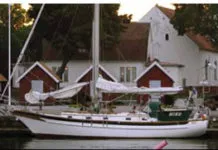
Cabo Rico’s Classic Cutter
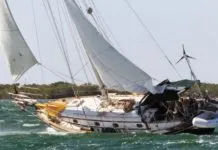
Bob Perrys Salty Tayana 37-Footer Boat Review
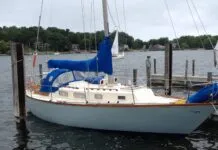
Tartan 30: An Affordable Classic
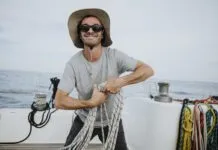
Preparing Yourself for Solo Sailing
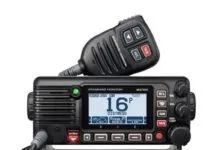
Your New Feature-Packed VHF Radio
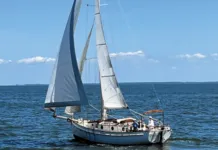
Preparing A Boat to Sail Solo
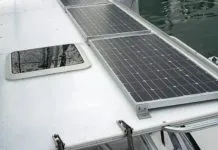
Solar Panels: Go Rigid If You have the Space…
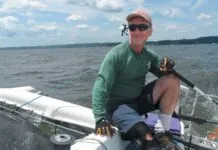
When Should We Retire Dyneema Stays and Running Rigging?
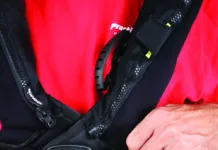
Rethinking MOB Prevention

Top-notch Wind Indicators
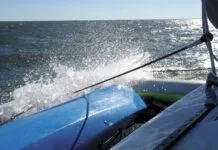
The Everlasting Multihull Trampoline
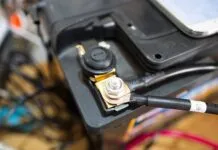
Taking Care of Your 12-Volt Lead-Acid Battery Bank
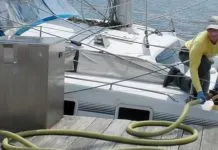
Hassle-free Pumpouts

What Your Boat and the Baltimore Super Container Ship May Have…
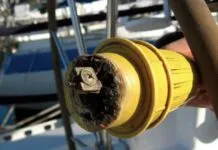
Check Your Shorepower System for Hidden Dangers
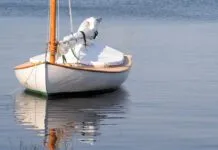
Waste Not is the Rule. But How Do We Get There?
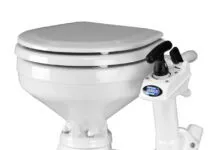
How to Handle the Head
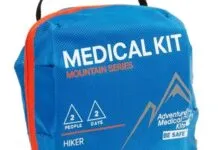
The Day Sailor’s First-Aid Kit
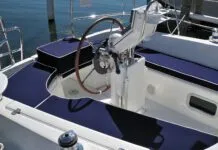
Choosing and Securing Seat Cushions
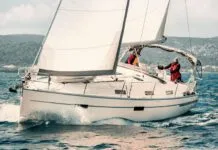
How to Select Crew for a Passage or Delivery
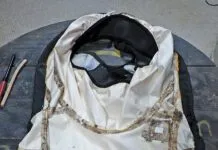
Re-sealing the Seams on Waterproof Fabrics
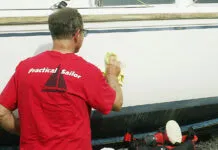
Waxing and Polishing Your Boat
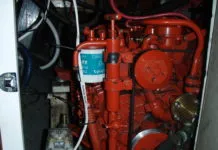
Reducing Engine Room Noise
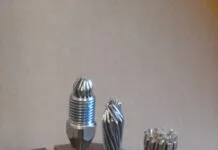
Tricks and Tips to Forming Do-it-yourself Rigging Terminals
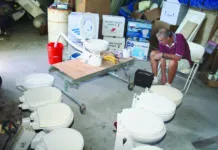
Marine Toilet Maintenance Tips

Learning to Live with Plastic Boat Bits
- Sailboat Reviews
This solid '60s cruiser comes in several layouts and is a good value, but is short on space and features.
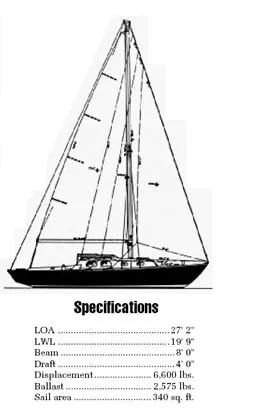
The Bristol 27 is a product of an early collaboration between Clint Pearson of Bristol, Rhode Island, and designer Carl Alberg. The stamp of both men is clearly evident in this solid-as-a-rock traditionally styled small cruiser.
The Boat and the Builder Pearson, with his cousin Everett Pearson, was a founder of the original Pearson Yachts in 1955 and a pioneer in the mass production of fiberglass yachts. The boat that brought the company to prominence was the 28-foot Triton, drawn by Alberg, who at the time was still in the U.S. Coast Guard and designing boats on the side. Clint Pearson recalled recently that the Triton and subsequent Alberg designs were so successful that the firm found it cheaper to hire a full-time naval architect (Bill Shaw) than to work with Alberg on a royalty basis. (Alberg died in 1983.)
But when Clint Pearson left Pearson Yachts in the early 1960s, after Grumman Allied Industries bought the company, he quickly turned to Alberg for help with his new line of semi-custom boats. The Triton had been very popular, Pearson said, and Carl had been a nice guy to work with. Alberg drew the lines for a 27-footer to complement Bristol Yachts only other model, a 19-footer, and the first Bristol 27 was built in the spring of 1965.
At this point, no one is sure exactly how many of the 27s were built. An early Bristol Yachts brochure says that more than 300 were sold in the first three years. The best guess is that 400 or more were built between 1965 and the mid-1970s. Because of their rugged construction, its safe to say that most of them are still plying the waters somewhere today.
Except for the 1970s-era Bristol 24, designed by Paul Coble, and the 27.7, designed by Halsey Herreshoff, Bristol in recent years has concentrated on much larger boats. The company, although much reduced in workforce, was still operating inthe fall of 1991, concentrating on the 47.7 and a 35.5, both Ted Hood designs.
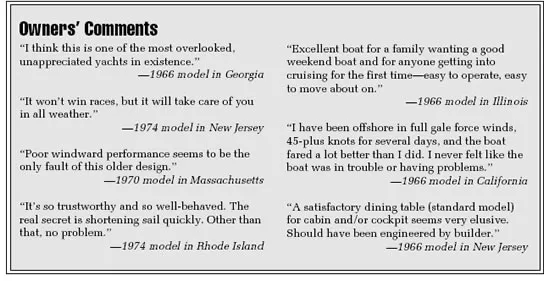
The Design The Bristol 27 is a product of its era and of the traditional bent of Albergs thinking-that is, a combination cruiser and club racer. At 6,600 pounds displacement with 2,575 pounds of internal lead ballast in its full keel, the boat is fairly heavy by contemporary standards. Fast enough on its own merits, it has an average PHRF rating of 234. By comparison, the lighter Catalina 27 with fin keel and spade rudder has a PHRF rating of about 210, and the Cal 27, also with a divided underbody, a rating of 192 to 200. Clearly, the Bristol was designed to be seaworthy rather than swift.
With its narrow beam (just eight feet), fair sheer line and generous overhangs, the 27 is pleasing to the eye. Unfortunately, the exaggerated stepped cabin top, which towers over the deck, is out of proportion to the height of the topsides. (A dodger helps camouflage its ungainly appearance.)The boat has a short waterline of only 19′ 9″, which is typical of boats designed under the old Cruising Club of America racing rule. The idea was to save rating with a short waterline; once heeled, however, part of the long overhangs become immersed and effective sailing length increases by several feet. Thus, its displacement/ length ratio of 382 is deceiving. Assuming a sailing length of 22 feet, the number drops to 276. Still, these are good numbers for a traditional cruising sailboat.
The keel, though full, has a gently curving forefoot to aid in maneuvering. The lead ballast is encapsulated inside the keel and the rudder is hung on the trailing edge, where it is well protected from grounding.
The 27 was produced in three models: the Weekender, which features an eight-foot cockpit, but less room below, and two versions of the standard cruising model, with a 6′ 2″ cockpit. One has opposing settees in the main cabin and a split galley aft; the other has the galley to starboard and a convertible dinette to port. The dinette model, with the galley and a table to port, proved the most popular, despite the loss of the starboard sea berth. The table was no doubt part of its appeal, and the galley is easier to work at, though the sink is a bit far off the centerline and may not drain when the boat is heeled far over.
Some owners of the settee version complained that no provision had been made for a table.
Some of the earliest models featured a bridgedeck, which added to the seamanlike appearance, but was later dropped in favor of a low sill. The bridgedeck is safer, but the sill is easier to step over when going below.
Construction The Bristol 27, like most Bristol yachts, was built like a brick lighthouse. The hull is solid hand-laid fiberglass, largely woven roving, according to company literature. We probably overdid it on the fiberglass work because of the relative unfamiliarity of the new material, said Eddie Medeiros, a longtime Bristol Yachts employee who is now vice president for operations. He estimates the hull is 1/2-inch thick below the waterline and 3/8-inch thick above.
The deck, deckhouse and cockpit are integrally molded; the hull-deck joint is through-bolted and caulked. In reviewing Practical Sailor survey responses on the 27, we found a number of owners who complained of hull-deck leaking. Deck and walkways are coated with Dexoleum, a non-skid coating that, on the boat we sailed, is beginning to show wear. Theres a teak cap rail and teak grab rails (as well as teak hand rails in the companionway and main cabin).
The masthead rig is a 31′ 9″ anodized aluminum extrusion of Bristols design, with a 12-foot boom equipped with a spring-type roller reefing gooseneck.Shrouds are 7/32-inch stainless steel wire and the 7/16-inch turnbuckles are chrome-plated Monel. Hardware and equipment are of good quality- Lewmar #8 winches, for example. (The molded-rein winch supports on the 27 we looked at were beginning to show some crazing.) Pulpits and lifelines were standard equipment.
Early models had an outboard well, but most of the boats weve seen are inboard-powered, either with an Atomic 4 or the optional Westerbeke Pilot 10 diesel. The inboards add some weight (as reflected in the PHRF rating) but greatly enhance performance under power, according to owners. Many owners of outboard models said there was insufficient power to make good progress motoring to windward, and that the prop is prone to cavitation when hobbyhorsing in a following sea or motoring to windward in a chop. These factors, plus the difficulty in raising the outboard (drag and corrosion problems) and the tendency of the well to flood prompt us to strongly recommend the inboard model.
Performance A number of owners who responded to our survey, and some we talked to, complained that the boat was initially very tender. One owner said he added 500 pounds of ballast. Some said they routinely reefed the mainsail in any wind over about 12 knots to keep the boat under control and the helm balanced. Others, including the owner of hull #156, the Nancy Jane out of Newport, indicated no problems with excessive heeling or tenderness. We decided to find out for ourselves on a late summer day that began with small craft advisories and settled into a steady 15-mph northwesterly punctuated by occasional puffs.
Under a full main and a working jib, the boat experienced no difficulty. It does heel over-then digs in and stays there. It hangs tough, is Clint Pearsons expression. This initial tenderness-almost too strong a term for the 15 or 20 degrees of heel-belies its ultimate stability. Weve heard of few knockdowns of Bristol 27s, even among those who routinely go offshore.
Gusts caused the boat to dig in a bit further and to round up slightly on its own; the stronger the wind, the higher it pointed. Except for a hint of weather helm caused by the relatively large main and small foretriangle-no problem for an afternoon sail but potentially tiring on a longer passage-the boat handled easily on all points of sail. The sensation of excessive helm is easily solved by a reef in the main or the use of a larger jib; with a 150-percent genoa, the owner of our test boat said the Bristol 27 balances perfectly. Despite the boats bulk and the extra windage created by the stepped cabin, the boat is nimble, tacking neatly and jibing with hardly a jar. The overall feeling is one of solidity, not stodginess.
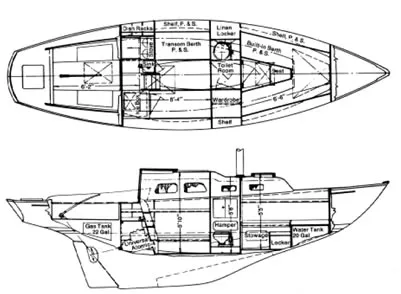
Belowdecks Down below, the traditional styling (one owner rein ferred to it as old-fashioned) continues, with lessroom than youd expect to find on a newer, beamier 27-footer. Here one can be grateful for the raised cabin top that provides plenty of standing headroom in the main cabin. Theres a fiberglass liner that hides the overhead, but just enough Philippine mahogany in the trim and bulkheads for warmth. The one sour note is some jarring 60s-style coloring- mustard or pea-green-for the laminated plastic veneers. Four fixed ports in the main cabin, four smaller ports in the head and forward cabin (one opening in each), and a translucent forward hatch provide lots of light. Some owners we know have added a Dorade vent farther forward, over the chain locker, for extra ventilation.
The dinette model has a swiveling table to port that can be removed to convert the settee to a double berth. A compact galley lines the starboard side of the main cabin. The galley includes an ice box, a sink and a two-burner alcohol stove. Several owners said they have replaced the original pressurized version with the safer Swedish-made Origo, which fits the space exactly. The alternative cruising model has a second transom berth in place of the galley, with the galley components installed along the aft bulkhead on either side of the companionway. (The dinette model has a starboard quarter berth aft of the galley.) There is ample storage space, including a hanging locker.
Inboard engine access is simple-either open a hatch below the companionway or remove the steps completely. The cruising models have an enclosed head forward of the port berth, with 5′ 10″ of headroom, and two 6′ 6″forward berths (the rare weekender model has 6′ 7″ V-berths). On deck, there are several storage options-port and starboard lockers and a roomy lazarette aft of the tiller. The interior might be a bit snug, but Bristol Yachts managed to fit in the basics. Its definitely a Plain Jane below, but this is one area where owners can easily customize to suit their taste.
Conclusions If you are looking for seaworthiness and stability in a small cruiser, and if you don’t mind a traditional interior that foregoes someof the elbow spaceof abeamier boat, the Bristol 27 is worth considering. Given its structural soundness-these boats will bearound for some time-and given its modest price in todays soft market, wed rate it an exceptional value for a used boat. Keep in mind, however, that its a small cruiser-roomy enough for a couple, and possibly a child or two, but slightly cramped down below and in the cockpit for four adults.
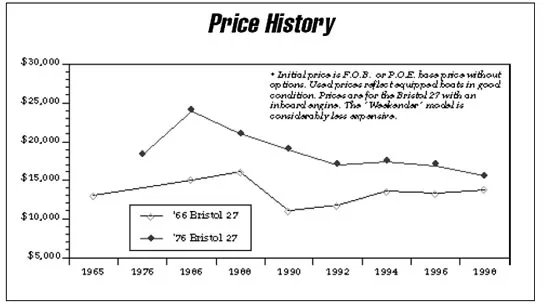
Bristol Yachts is still in business, but barely. The headquarters have been moved to the family-owned boat yard (Poppasquash Rd., Bristol, RI 02809) and only a few boats are under construction. Dont expect much help on matters relating to older boats, especially since many owners said the company was poor in its customer relations once the sale was completed.
The Bristol 27 sold originally for a base price of about $13,000, increasing to $18,400 by 1976, and held its value well until the most recent drastic falloff in used boat prices.
RELATED ARTICLES MORE FROM AUTHOR
Thanks for all the insightful information I may purchase one soon from Alameda California
LEAVE A REPLY Cancel reply
Log in to leave a comment
Latest Videos
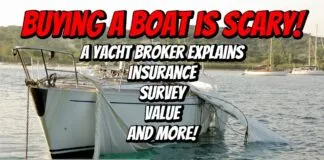
Buying A Sailboat Is Scary! Yacht Broker Interview

The Great Loop – The Basics

Bottom Paint Showdown – Six Paints, One Winner!

Tartan 30 | Boat Review
- Privacy Policy
- Do Not Sell My Personal Information
- Online Account Activation
- Privacy Manager

- Forum Listing
- Marketplace
- Advanced Search
- About The Boat
- Boat Review Forum
- SailNet is a forum community dedicated to Sailing enthusiasts. Come join the discussion about sailing, modifications, classifieds, troubleshooting, repairs, reviews, maintenance, and more!
Contest 1970s Sailboats- Contest 30 Mk II, Contest 34
- Add to quote
These posts have long lives. A 2011 post by Jeff H on "early Contests" was very damning, I believe unfairly so. Jeff is knowledgable and seemed to base his experience on a 1960s era smaller boat that is quite different from the overall excellent experiences on 1971-76 era Contests I have had. The Van Essen and Zaal designed boats I have refit and sailed had none of the problems Jeff described. The Van Essen Contest 30 Mk II sailed well in gale winds, did not round up unduly, had a comfortable ride. A stout boat. Since refitting her, I've sailed her over 10,000 miles up, down and off the East Coast. Very stable vessel. The only structural change I made was to install larger backing plates for the cap shroud chainplates. She routinely turns in 130-135 NM days offshore in 12-15 kt winds. For safety, I depower her at night in higher winds when her speed exceeds 8 kts running. No kidding. The encapsulated lead ballast is set low, such that she is not a tender sailer. The Contest 34, a Zaal design, somewhat resembles the Van Essen below the waterline, but is an even better built boat that also does not perform, nor is she built, like the vessel Jeff describes. I haven't the heavy weather time (yet) on her that I have on the 30, but with her conservative rig and greater displacement, and the very positive experience of an early owner of my specific boat who did 3 trans-Atlantics on her, I do not anticipate an experience similar to Jeff's. I do not doubt Jeff's comments on his family's boat. But I don't want to see his comment applied to excellent Contest models which do not deserve to be pilloried. I doubt Jeff intends that effect either. Contest still builds sailboats; they are high-priced, high end and enjoy a solid reputation. The Conijn family still runs the place; they never sold the business or the name, never went belly-up like so many other yacht builders.
I basically agree with these comments. By and large my most intimate knowledge of Contests are from the 1950's, 1960's and early 1970's era Contests. Contest (Conyplex) has built a lot of boats in the years since. In this long period, Contest has produced a very wide range of design types, some of which appear to be heavy duty cruisers and others appear to be lively racer/coastal cruisers. My comments should therefore be viewed as a snapshot of the early boats, the 25, 27 and 29. While I have some experience with a few of the later models, I readily acknowledge that I don't have an in-depth knowledge of these later models. Lastly, my comments on the Contest 25 are the result of 5 1/2 decades of hindsight. At the time that we owned the Contest 25 (1962) we saw hers as an amazingly advanced design for her day and a joy to sail compared to similar sized designs like the Ariel or Meridian. Built quality aside, this was a nice boat for our new to sailing family as compared to many 25 foot 1960's era coastal cruisers. As a family of four we sailed that boat all over Long Island Sound staying aboard for weeks at a time. Jeff
Thank you, Jeff, for your insight. An example of Internet communication achieving its potential as an informative medium. I'm close by, down the Bay from you in Hampton!
I was happy to find at least some discussion of a Contest 30 Mk2 anywhere on the net. My family owns one from 1971 since new and the fourth generation is now aboard. She´s a solid boat, built with an extra layer of glass and some other upgrades on request, but in general our experiences should apply to other sisters. Finish is not fine everywhere, if you look behind the interior, but solid. And she is built with an inner deck mould, which is more refined than many other boats from the 70´s. After 25 years the deck became soft around the main bulkhead/mast and we strengthened the chainplates by extending them down to the hull. She had an osmosis treatment some time in the 80´s and she received a new Selden rig in the 90´s. We´ve also been through several engines by bad luck and because the engines were used a lot. Which brings me to the most peculiar point: why would you attach your heart to such a boat? She´s neither fast, nor very pretty, let alone unique. But we´re located in Europe, about 300 km up a river and each spring we travel downstream to the North Sea or via the canals to the Baltic and return in the autumn. So the boat is used for cruising by all family members in exchange for several months each year and as a weekender the rest of the time. I´d say, she hast probably logged more miles than the average family boat. In the past 53 years having a bigger boat just was never an option. What is particularly good about this boat? 1. More draft would confine us to the harbour in dry times and we could not explore the Wadden Sea or tiny off beat river mouths in the UK or Brittany. 2. A longer mast would restrict weekend sailing at higher water levels and we could not lower it easily in less than an hour to pass through the canals. Yet at 30 feet and rather heavy displacement she is large enough to stay at sea comfortably for three days with a crew of four. So here she is, our perfect boat. 3. The roomy, well protected cockpit and the deck layout! Zaal hat a lucky stroke in drawing this and it looks very fine in proportion next to most modern boats. In fact, the older she gets, the better she looks amongst roomy boats with bunker windows cut in their hulls, I think. Only the round stern is - well - interesting, but in fact more practical than the later negative stern of the Contest 31 if you handle a stern anchor or mooring ropes. We did significantly increase the drainpipes, though, and led them straight down to a pair of venturi-effect outlets. 4. The hatchway area is just so much better than the ladders found on many other boats. The engine box (due to our 30 hp engine ours extends a little further in the saloon) is very practical to sit on when working in the galley at sea or in harbour. 5. She is comfortable and soft at sea, particularly in a short wave like it is found near the Conyplex yard on the Ijsselmeer. She is less good in longer waves and tends to hobby horse, being loaded with 50 m chain up forward and a life raft on the stern. She rolls like hell downwind. But I suppose so would most boats. 6. She is easy on the rudder. Even with too much sail up she won´t shoot in the sun. And manoevering under engine is dead simple compared to both long keeled and more modern fin keeled yachts with saildrive far away from the rudder. 7. The moderatly long keel with in-moulded ballast allows for drying out and leaning to the wall even with a little swell and so does the hefty original teak/stainless rub rail with the badly sunken screw heads, that brings panic in the eyes of your neighbour. I hope this might give some insight.
- ?
- 174.1K members
Top Contributors this Month

A Comprehensive List of the United States Sailboat Manufacturers of the last 100 Years!
Published by sail on march 18, 2023 march 18, 2023.
Here are some of the most notable United States sailboat manufacturers of the past 100 years, along with a brief description of each:
Catalina Yachts –
Founded in 1970, Catalina Yachts is one of the largest sailboat manufacturers in the United States. Their boats range from 12 to 50 feet in length and are popular among both recreational sailors and serious cruisers.
Hunter Marine –
Hunter Marine was founded in 1973 and has built a reputation for producing high-quality sailboats that are both comfortable and seaworthy. Their boats range from 15 to 50 feet in length and are popular among cruisers.
Beneteau USA –
Beneteau is a French boat manufacturer with a strong presence in the United States. They produce a wide range of sailboats, from small day-sailers to large ocean-going cruisers.
J/Boats –
J/Boats is a racing-oriented sailboat manufacturer that was founded in 1977. Their boats are known for their speed and performance, and are popular among both amateur and professional sailors.
Pearson Yachts –
Pearson Yachts was founded in 1957 and produced a range of popular sailboats, including the Pearson Triton and Pearson 30. They went out of business in 1991, but many of their boats are still sailing today.
Tartan Yachts –
Tartan Yachts has been producing high-quality sailboats since 1960. Their boats are known for their classic design and seaworthiness, and are popular among both cruising sailors and racing enthusiasts.
Island Packet Yachts –
Island Packet Yachts was founded in 1979 and has built a reputation for producing high-quality cruising sailboats that are comfortable and seaworthy. Their boats range from 26 to 52 feet in length.
O’Day Yachts –
O’Day Yachts was founded in 1958 and produced a wide range of sailboats, from small day-sailers to large cruising boats. They went out of business in 1989, but many of their boats are still sailing today.
Cape Dory Yachts –
Cape Dory Yachts was founded in 1963 and produced a range of popular cruising sailboats, including the Cape Dory 25, Cape Dory 30, and Cape Dory 36. They went out of business in 1991, but many of their boats are still sailing today.
C&C Yachts –
C&C Yachts was founded in 1969 and produced a range of high-performance sailboats, including the C&C 35, C&C 41, and C&C 44. They went out of business in 2003, but many of their boats are still sailing today.
Here are additional United States sailboat manufacturers from the past 100 years:
Bristol yachts –.
Bristol Yachts was founded in 1966 and built high-quality cruising sailboats, including the Bristol 32, Bristol 35.5, and Bristol 41.1. The company went out of business in 1997.
Hinckley Yachts –
Hinckley Yachts was founded in 1928 and is known for its high-quality, custom-built sailing yachts, including the Hinckley Bermuda 40, Hinckley Sou’wester 51, and Hinckley Picnic Boat. The company continues to produce boats today.
Sabre Yachts –
Sabre Yachts was founded in 1970 and produces a range of high-quality sailing yachts, including the Sabre 34, Sabre 42, and Sabre 48. The company continues to produce boats today.
Ericson Yachts –
Ericson Yachts was founded in 1963 and produced a range of popular sailboats, including the Ericson 27, Ericson 35, and Ericson 38. The company went out of business in 1990, but many of their boats are still sailing today.
Cal Yachts –
Cal Yachts was founded in 1956 and produced a range of popular sailboats, including the Cal 25, Cal 40, and Cal 48. The company went out of business in 1989, but many of their boats are still sailing today.
Columbia Yachts –
Columbia Yachts was founded in 1958 and produced a range of popular sailboats, including the Columbia 22, Columbia 34, and Columbia 50. The company went out of business in 1986, but many of their boats are still sailing today.
Tartan C&C –
Tartan C&C was formed in 2003 when the Tartan and C&C brands were merged. They produce a range of high-performance cruising sailboats, including the Tartan 3700, Tartan 4300, and Tartan 4700.
Pacific Seacraft –
Pacific Seacraft was founded in 1976 and produced a range of high-quality cruising sailboats, including the Pacific Seacraft 34, Pacific Seacraft 37, and Pacific Seacraft 44. The company went out of business in 2018.
Islander Yachts –
Islander Yachts was founded in 1956 and produced a range of popular sailboats, including the Islander 28, Islander 36, and Islander 40. The company went out of business in 1987, but many of their boats are still sailing today.
Cheoy Lee Yachts –
Cheoy Lee Yachts was founded in 1870 and produced a wide range of boats, including sailboats. They are known for their high-quality craftsmanship and innovative design. The company continues to produce boats today.
Island Packet Yachts was founded in 1979 and is known for producing high-quality cruising sailboats, including the Island Packet 31, Island Packet 38, and Island Packet 420. The company continues to produce boats today.
J Boats –
J Boats was founded in 1977 and produces a range of high-performance racing sailboats, including the J/22, J/24, and J/111. The company continues to produce boats today.
Morris Yachts –
Morris Yachts was founded in 1972 and is known for producing high-quality custom-built sailboats, including the Morris M36, Morris M42, and Morris M52. The company continues to produce boats today.
Shannon Yachts –
Shannon Yachts was founded in 1975 and produces a range of high-quality cruising sailboats, including the Shannon 28, Shannon 38, and Shannon 53. The company continues to produce boats today.
Swan Yachts –
Swan Yachts was founded in 1966 and produces a range of high-end racing and cruising sailboats, including the Swan 45, Swan 60, and Swan 115. The company continues to produce boats today.
Tayana Yachts –
Tayana Yachts was founded in 1973 and produces a range of high-quality cruising sailboats, including the Tayana 37, Tayana 42, and Tayana 52. The company continues to produce boats today.
TPI Composites –
TPI Composites was founded in 1968 and is known for producing high-performance racing sailboats, including the J/22, J/24, and J/105. The company also produces components for wind turbines and other industries.
Vanguard Sailboats –
Vanguard Sailboats was founded in 1964 and produces a range of sailboats, including the Laser, Sunfish, and Vanguard 15. The company also produces kayaks and other watercraft.
Westerly Marine –
Westerly Marine was founded in 1956 and produced a range of popular sailboats, including the Westerly Centaur, Westerly Renown, and Westerly Oceanranger. The company went out of business in 2000, but many of their boats are still sailing today.
W.D. Schock Corporation –
W.D. Schock Corporation was founded in 1946 and produces a range of sailboats, including the Santana 20, Schock 35, and Harbor 20. The company continues to produce boats today.
O’Day Corporation –
O’Day Corporation was founded in 1958 and produced a range of popular sailboats, including the O’Day 22, O’Day 27, and O’Day 40. The company went out of business in 1989.
Cal Boats –
Cal Boats was founded in 1957 and produced a range of popular sailboats, including the Cal 20, Cal 25, and Cal 40. The company went out of business in 1989.
Pearson Yachts was founded in 1959 and produced a range of popular sailboats, including the Pearson Triton, Pearson Ensign, and Pearson 30. The company went out of business in 1991.
Columbia Yachts was founded in 1958 and produced a range of popular sailboats, including the Columbia 26, Columbia 29, and Columbia 45. The company went out of business in 1987.
Tartan Yachts was founded in 1960 and produced a range of high-quality cruising sailboats, including the Tartan 27, Tartan 37, and Tartan 4400. The company continues to produce boats today.
Hinckley Yachts was founded in 1928 and is known for producing high-quality custom-built sailboats, including the Hinckley Bermuda 40, Hinckley Sou’wester 42, and Hinckley Talaria 55. The company continues to produce boats today.
Wauquiez Yachts –
Wauquiez Yachts was founded in 1965 and produced a range of high-end cruising sailboats, including the Wauquiez Centurion 32, Wauquiez Pretorien 35, and Wauquiez Pilot Saloon 48. The company went out of business in 2020.
Hunter Marine was founded in 1973 and produced a range of popular cruising sailboats, including the Hunter 25, Hunter 33, and Hunter 45. The company went out of business in 2012.
Catalina Yachts was founded in 1969 and produces a range of popular cruising sailboats, including the Catalina 22, Catalina 36, and Catalina 445. The company continues to produce boats today.
Com-Pac Yachts –
Com-Pac Yachts was founded in 1974 and produces a range of compact cruising sailboats, including the Com-Pac 16, Com-Pac Horizon Cat, and Com-Pac Eclipse. The company continues to produce boats today.
Precision Boat Works –
Precision Boat Works was founded in 1979 and produces a range of small sailboats, including the Precision 15, Precision 18, and Precision 23. The company continues to produce boats today.
Ericson Yachts was founded in 1963 and produced a range of popular cruising sailboats, including the Ericson 29, Ericson 35, and Ericson 38. The company went out of business in 1990.
Newport Boats –
Newport Boats was founded in 1945 and produced a range of popular cruising sailboats, including the Newport 30, Newport 41, and Newport 46. The company went out of business in the 1990s.
Bristol Yachts was founded in 1966 and produced a range of high-quality cruising sailboats, including the Bristol 27, Bristol 32, and Bristol 45.5. The company went out of business in 1997.
Allied Boat Company –
Allied Boat Company was founded in 1962 and produced a range of sturdy, ocean-going sailboats, including the Allied Seawind, Allied Luders 33, and Allied Princess. The company went out of business in the 1980s.
C&C Yachts was founded in 1969 and produced a range of high-performance racing sailboats, including the C&C 27, C&C 30, and C&C 44. The company went out of business in 2008.
Columbia Yachts (Modern) –
Columbia Yachts (Modern) was founded in 2007 and produces a range of modern cruising sailboats, including the Columbia 32, Columbia 45, and Columbia 50. The company continues to produce boats today.
For a complete picture, please use our free searchable database here!
Related Posts

How to Buy the Best Beginner Sailboat?
Sailing is an alluring activity because it offers the possibility of independence on the broad sea and the rush that comes from using the wind. You’re in for a gratifying experience if you’ve made the Read more…

OceanWaveSail updates
How to anchor a boat.
One of the key abilities you must acquire before setting sail on your boat, whether it’s for a weekend getaway or a long-distance trip, is how to anchor a boat. While you’re out on the Read more…

How Fast Does a Cruise Ship Go?
Have you ever pondered “How fast does a cruise ship go?” while standing on a cruise ship’s deck and looking out at the great ocean? Many people have this thought on their minds when they Read more…
Subscribe to our newsletter
Don’t miss new updates on your email.
© OceanWave Sail. All Rights Reserved 2022
Terms & Conditions – Privacy Policy – Cookie Policy
About Us – Privacy Policy
- New account
Forgot your password?
Lost your password? Please enter your email address. You will receive mail with link to set new password.
Back to login
Privacy Overview

IMAGES
VIDEO
COMMENTS
An examination of 30-footers from the 1970s seems like a good place to begin our comparison of used boats, and the reasons are several: First, though boats 30-plus years old admittedly are getting a little long in the tooth, many are still around, and those well kept may represent great buys on the used-boat market—between $10,000 and $20,000.
Aug 2, 2017. Original: Nov 3, 2010. This second installment of SAIL's series on the evolution of modern sailboat design focuses on the 1970's—the IOR decade and beyond. It was also the decade of racer/cruisers, cruiser/racers, dedicated cruisers, the rise of trailersailers, and the first of the fun, fast day racers—the J/24 and the ...
The 1970s saw further rapid advances in boat design, with new boats becoming quickly outclassed. It also coincided with a new rule for rating race boats, the International Offshore Rule (IOR). This had an enormous effect on yacht design - many cruising yachts also sported the narrow, pinched sterns of the era.
Cruising sailboats like the Islander 36 were popular decades ago, and remain popular today. You can browse our available inventory of Islander 36 boats for sale today on YachtWorld. By the 1970s, Islander production was located in Southern California along with other classic builders like Columbia and Jensen Marine, which built Cals.
45 Years of Sailing. On SAIL's 45th anniversary, we look back at 45 inventions, developments and refinements that changed the way we sail. The year is 1970. Richard Nixon is in the White House. Men wear long sideburns, oversized sunglasses, medallions, velour shirts and platform shoes—. The year is 1970. Richard Nixon is in the White House.
11. Merlin. Built: 1977. Design: Bill Lee. Weight saving is the holy grail of yacht design today, but it wasn't until the late '70s that the first Ultra Light Displacement designs, or ULDBs ...
Ballad 30. Baltic 37. Bayfield 25. Bayfield 29. Bayfield 30/32. BB 10 (keelboat) Beachcomber 25. Beneteau Baroudeur. Beneteau Cabochard.
Antique and Classic sailing vessels pricing. Antique and Classic sailing vessels for sale on YachtWorld are available for a variety of prices from $6,520 on the more modest side all the way up to $4,180,940 for the most unique, bespoke yachts. Find Sail Antique And Classic boats for sale in your area & across the world on YachtWorld.
A Close Look at the Boat. In a number of ways the Ericson 27 can be considered an excellent representative of the Ericson line throughout the 1970s. Introduced in 1971, the 27 remained in production for nine years. In all, 1302 were built, making the 27 among the leaders in number of production boats built. Initially the 27 was, per the fashion ...
The boat's simplicity meant winning was truly a testament to one's skills; as one Sunfish dealer told the New York Times in 1970, "Racing one puts a lot on the man." Or woman, adds Lee ...
Get the best deals on 1970 Sailboats when you shop the largest online selection at eBay.com. Free shipping on many items | Browse your favorite brands | affordable prices. 1970 Sailboats for sale | eBay
The 30s hull is very full-to maximize interior space-but otherwise, its quite typical of the racer-cruisers of the 1970s. Overall, the boat is 29 feet, 11 inches long-the maximum allowable length under the then-popular Midget Ocean Racing Club (MORC) rule. The short overhangs result in a long waterline, fundamental for sailing speed.
Gulfstar Yachts, founded in Florida in 1970 by Vince Lazzara, a pioneer in fiberglass production boatbuilding, turned out a full line of roomy, affordable cruising sailboats, but arguably the best was the Gulfstar 50, introduced in 1975 and continuing in production until 1980.
1970 Sailboats for Sale (1 - 15 of 20) $31,000 1970 Raider 35 Sloop Mount Pleasant, SC. Bring All Offers - Owner Wants Her Sold! Amazing Dockage Opportunity! Chime is a 1970 Raider 35, one of just a few left worldwide. This sailboat is certainly an easy day sailing sloop, but she is also a very heavy sailboat for her size and is capa...
Fiberglass Boats. Fiberglass boats have been the go-to choice for water lovers since the 1970s. They are lightweight and durable, making them ideal for recreational activities of all kinds. Fiberglass boat manufacturers in this decade produced an array of vessels, from small fishing boats to luxury yachts. The process of building a fiberglass ...
Find 1960 to 1970 Sailboats for Sale on Oodle Classifieds. Join millions of people using Oodle to find unique used boats for sale, fishing boat listings, jetski classifieds, motor boats, power boats, and sailboats.
However, a boat is more than just a hull, and with time comes increasing opportunity for all of the systems on the boat to break down. Electrical systems from the 70s and, to a lesser degree, the 80s, aren't likely to be in great condition today. Presumably the running rigging will have been replaced at least once by now, but you might find ...
1970 O'Day Sailboats Catalog. This advertisement was taken from a 22-page O'Day brochure in my own collection. Besides the Mariner, it provides detailed information and colored pictures of the Tempest 2+2, International Tempest, Yngling, Rhodes 19, Day Sailer, O'Day 15, Javelin, Widgeon, Seven-Eleven, Sprite, and the sailboards Swift, Super Swift and Flying Saucer.
The Cal 34 is very typical of mid-range sailboats of the 1970s. Produced between 1968 and 1975, this basic but comfortable yacht has a lot of potential as a liveaboard. The interior is simple and spacious, without much luxury or adorning. However, less features make for less maintnence, and everything you'd need is available in the Cal 34.
Except for the 1970s-era Bristol 24, designed by Paul Coble, and the 27.7, designed by Halsey Herreshoff, Bristol in recent years has concentrated on much larger boats. The company, although much reduced in workforce, was still operating inthe fall of 1991, concentrating on the 47.7 and a 35.5, both Ted Hood designs.
Contest 1970s Sailboats- Contest 30 Mk II, Contest 34. Jump to Latest Follow ... By and large my most intimate knowledge of Contests are from the 1950's, 1960's and early 1970's era Contests. Contest (Conyplex) has built a lot of boats in the years since. In this long period, Contest has produced a very wide range of design types, some of which ...
Posts: 3,043. Re: Boats made in 1970's and 80'. Even if I had the budget for a new 35-42ft boat, say $200-300K I'd still get late 70s-early 80s model for $20K-30K and invest another $75K-150K putting her back in pristine condition with all new electronics, etc. And would have enough $$ left for a significant cruising kitty.
Founded in 1970, Catalina Yachts is one of the largest sailboat manufacturers in the United States. Their boats range from 12 to 50 feet in length and are popular among both recreational sailors and serious cruisers. ... J Boats was founded in 1977 and produces a range of high-performance racing sailboats, including the J/22, J/24, and J/111 ...